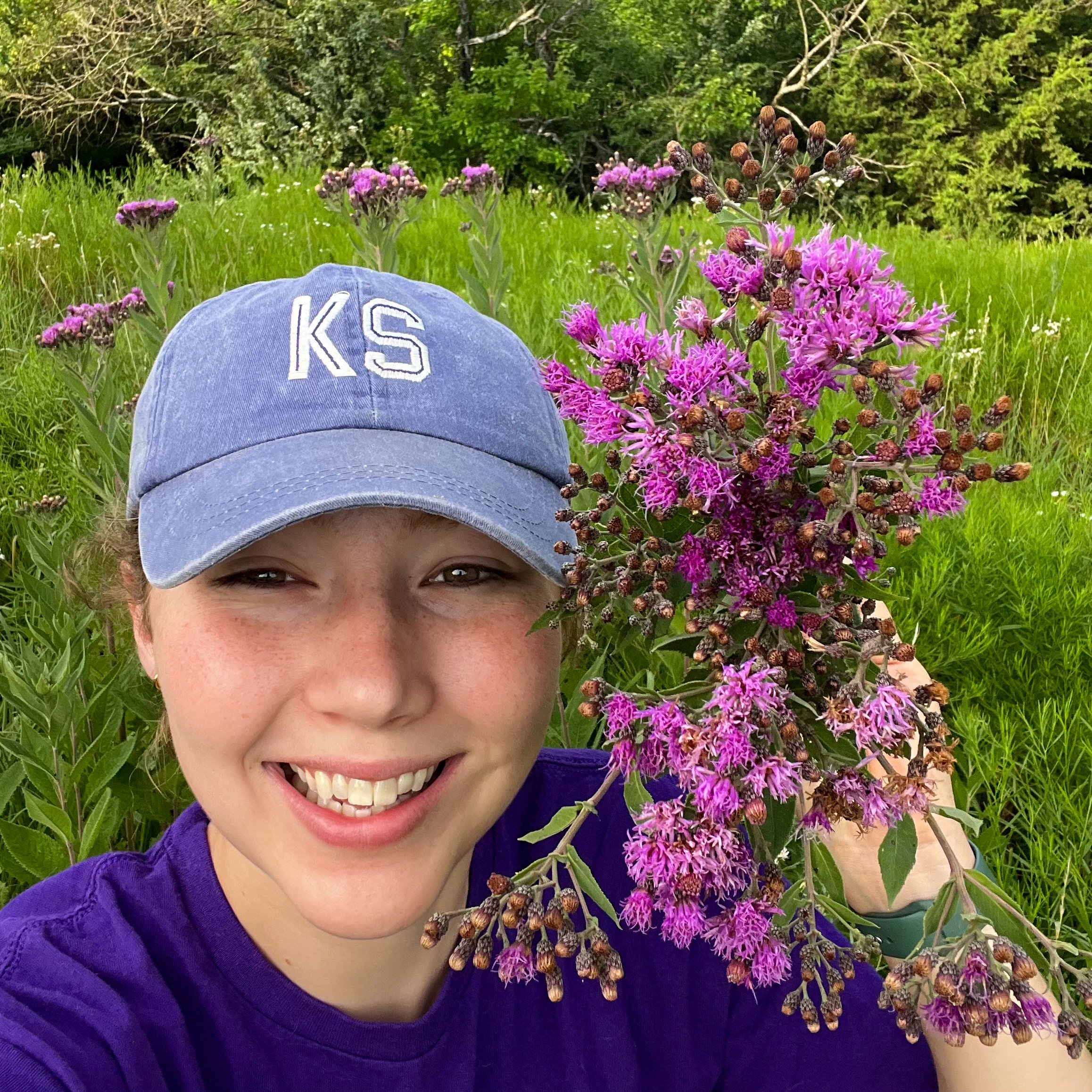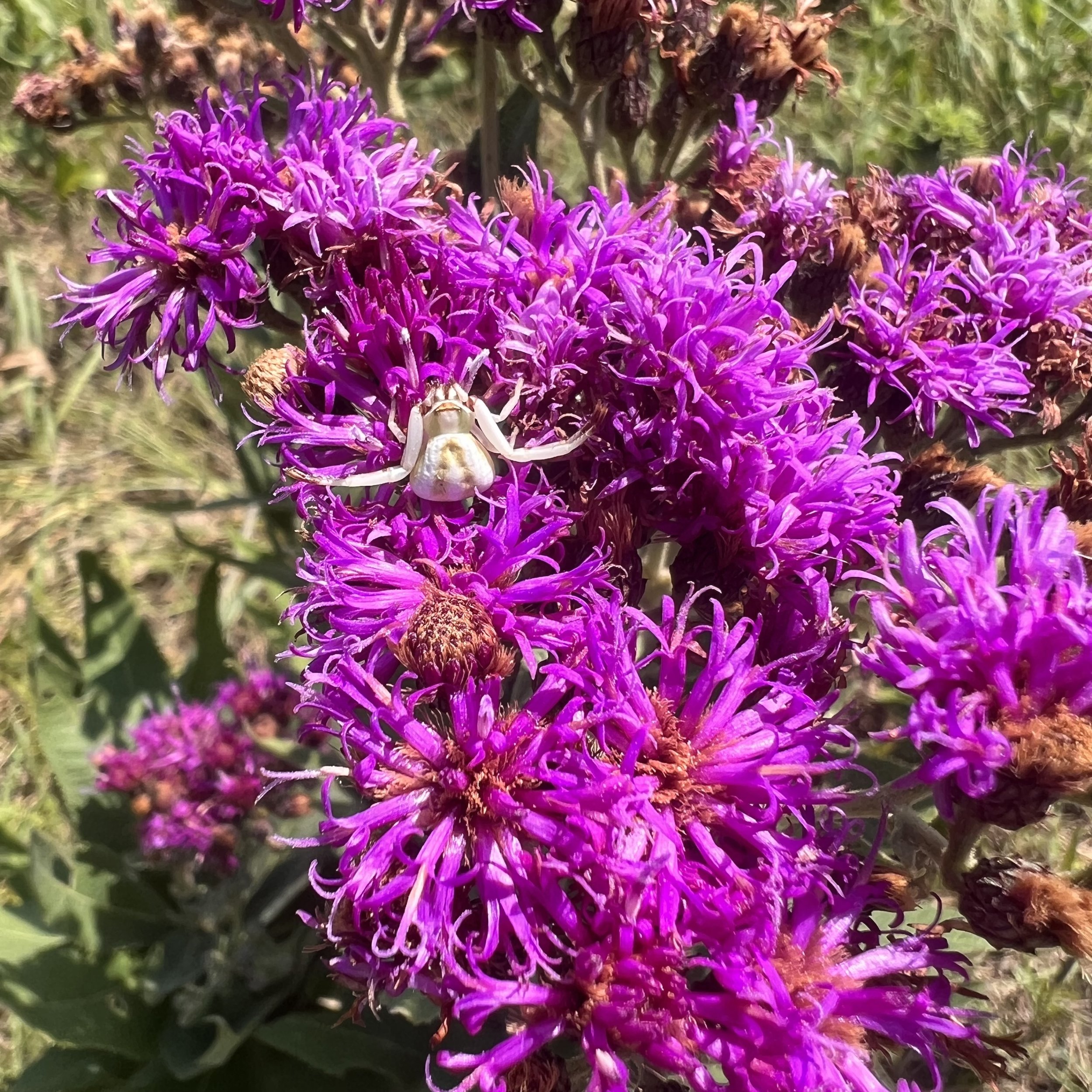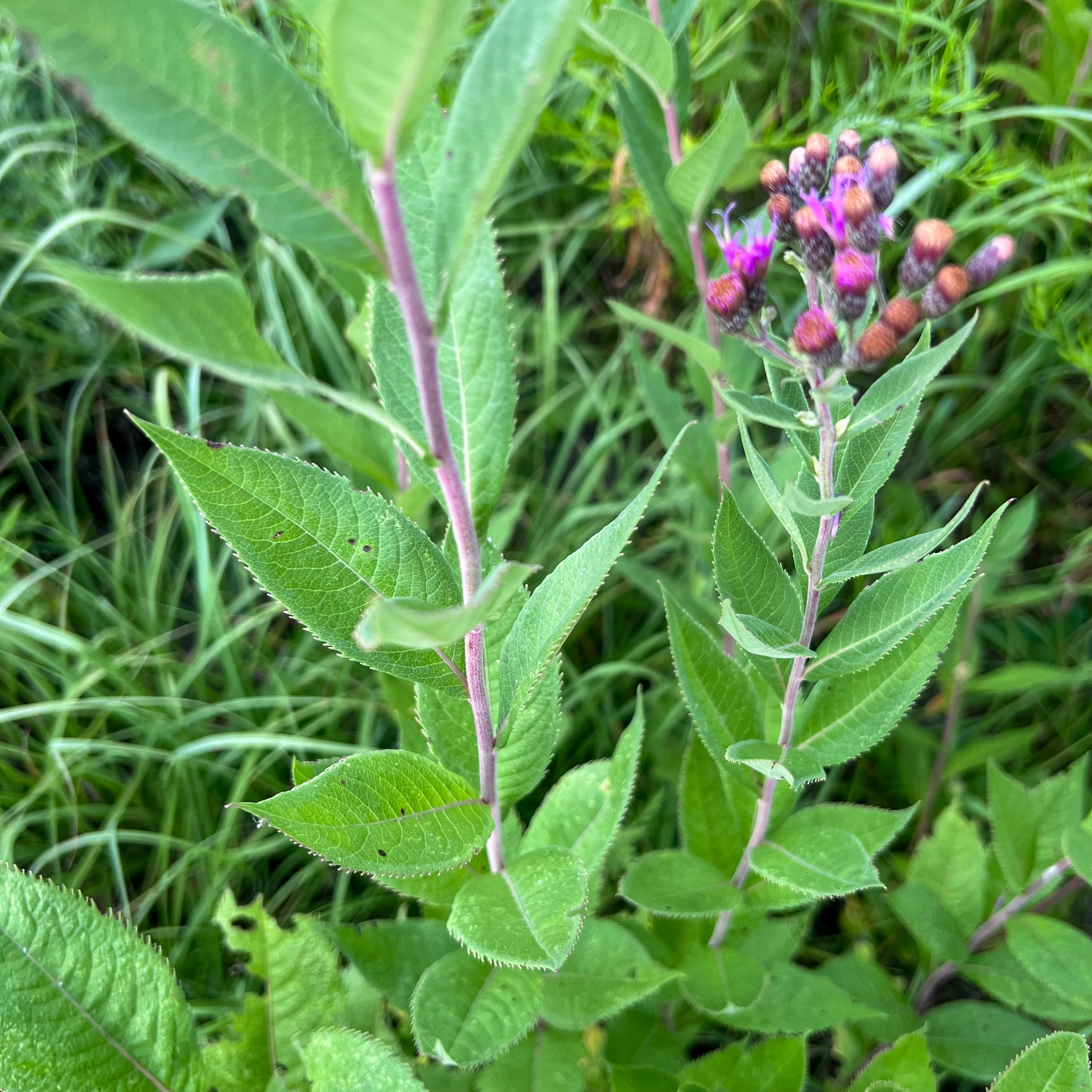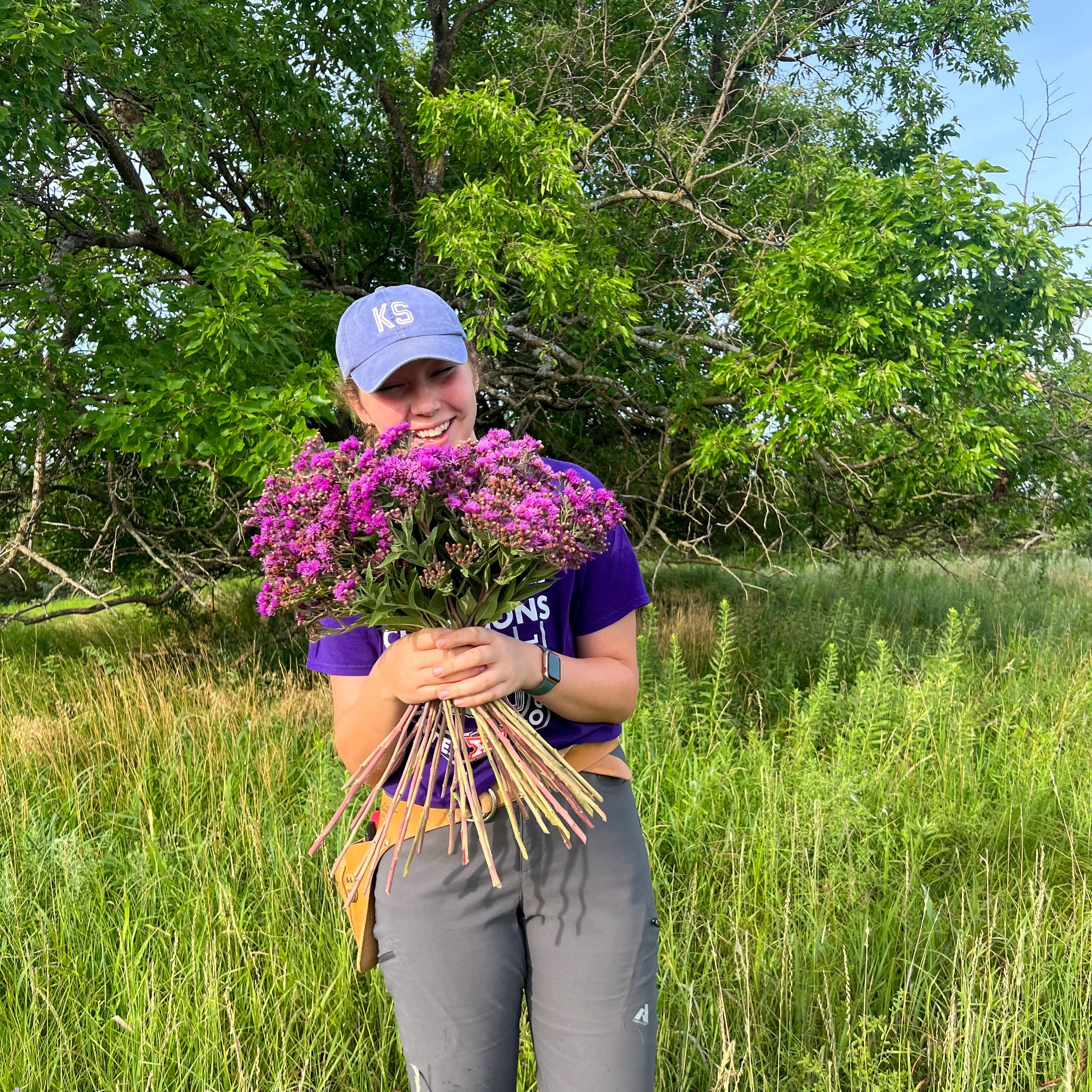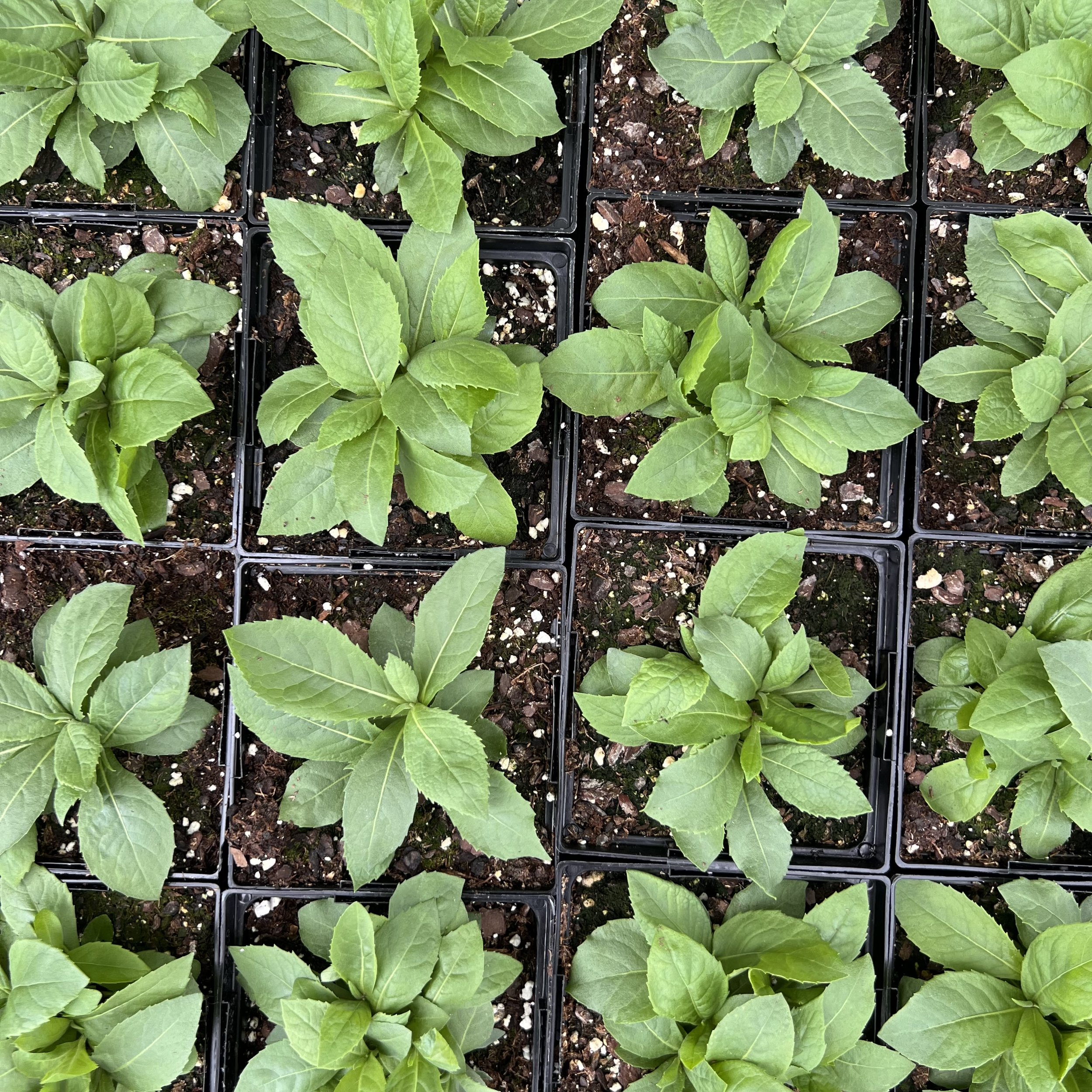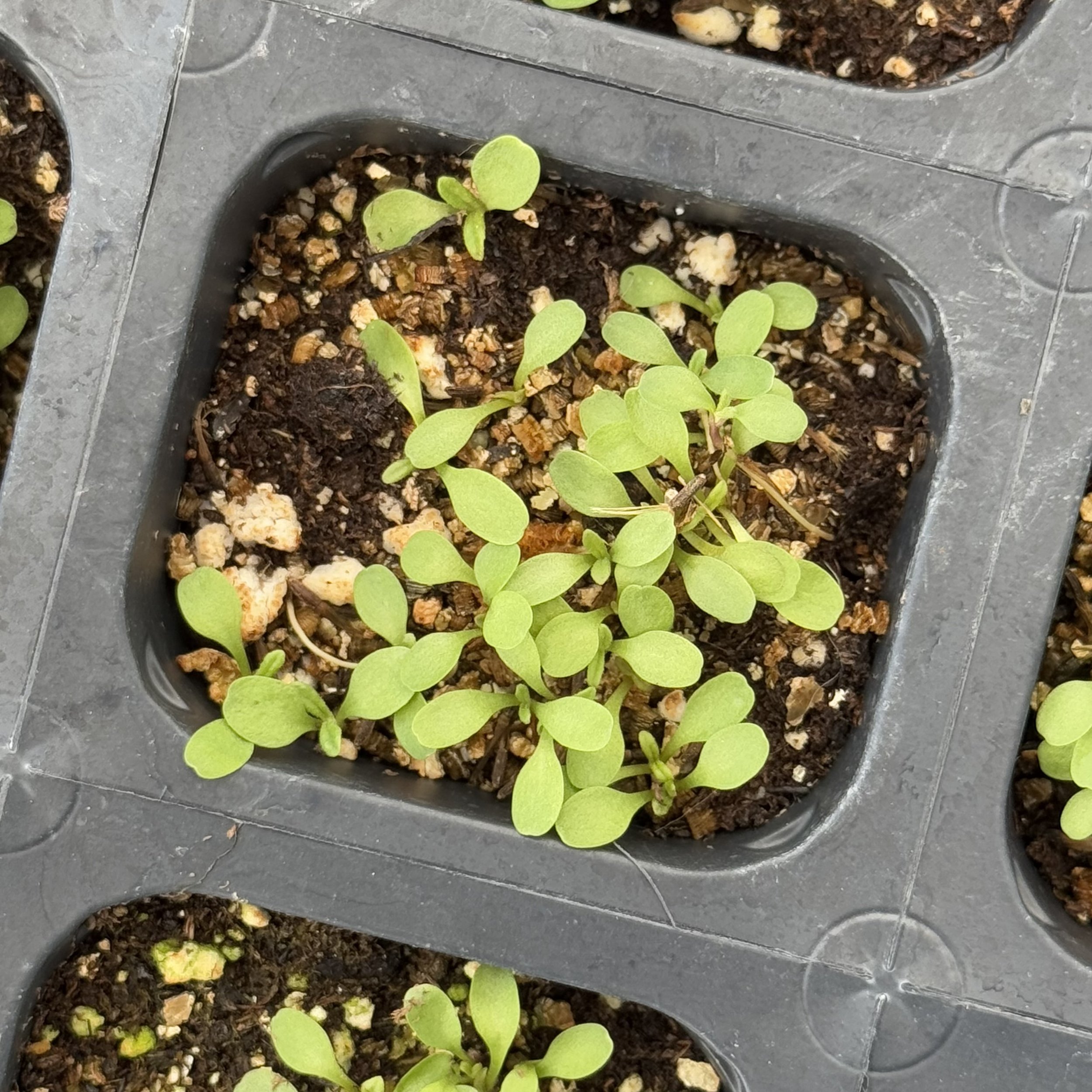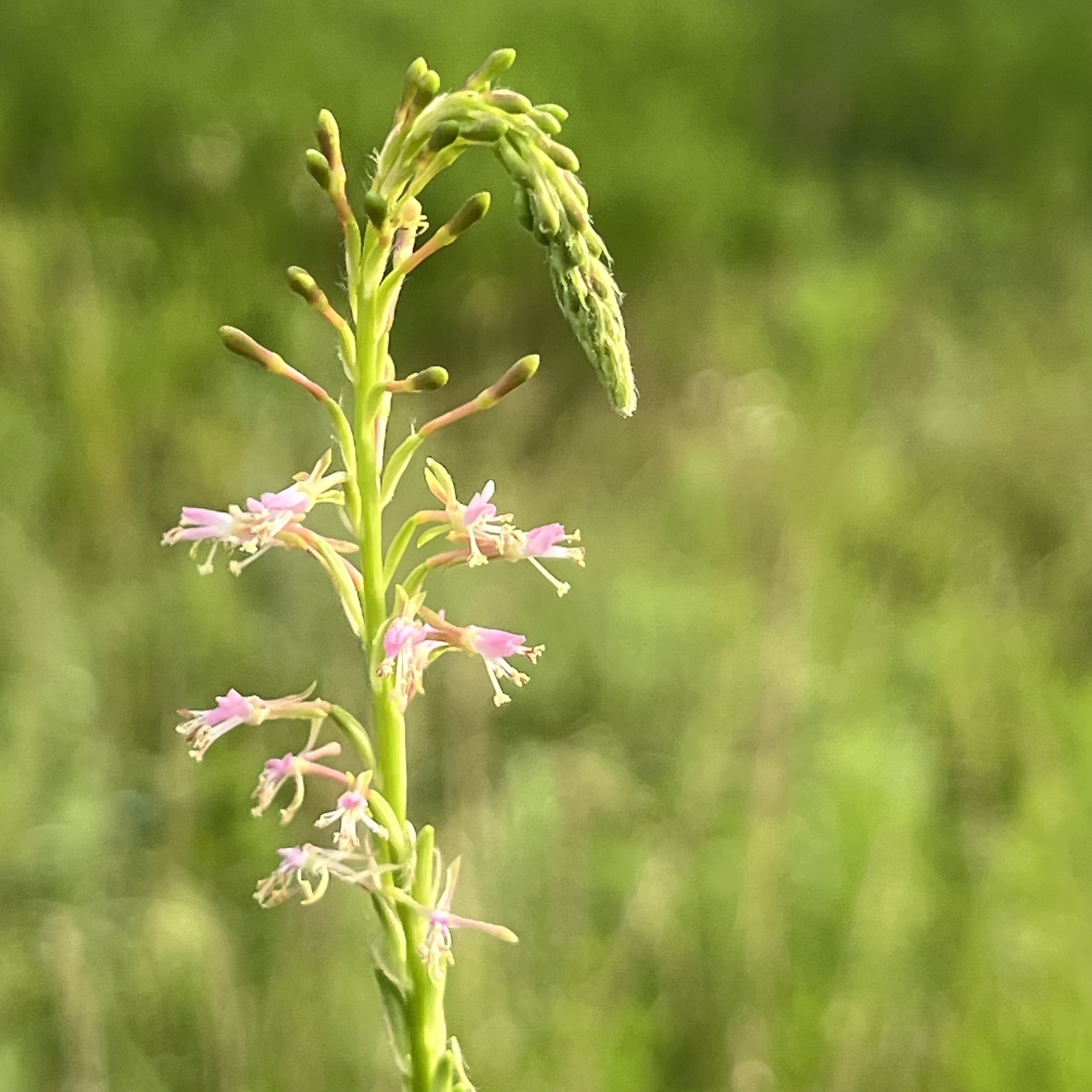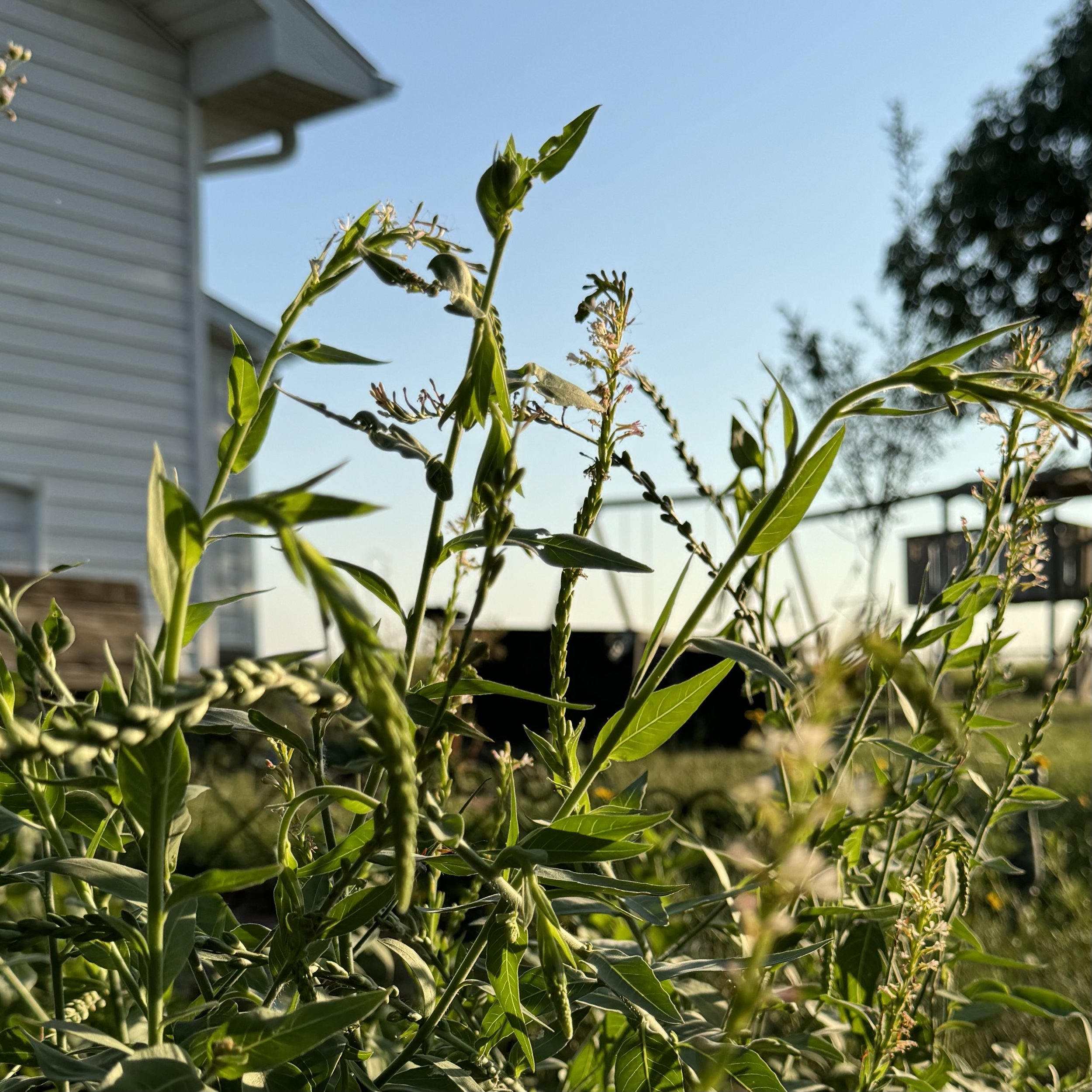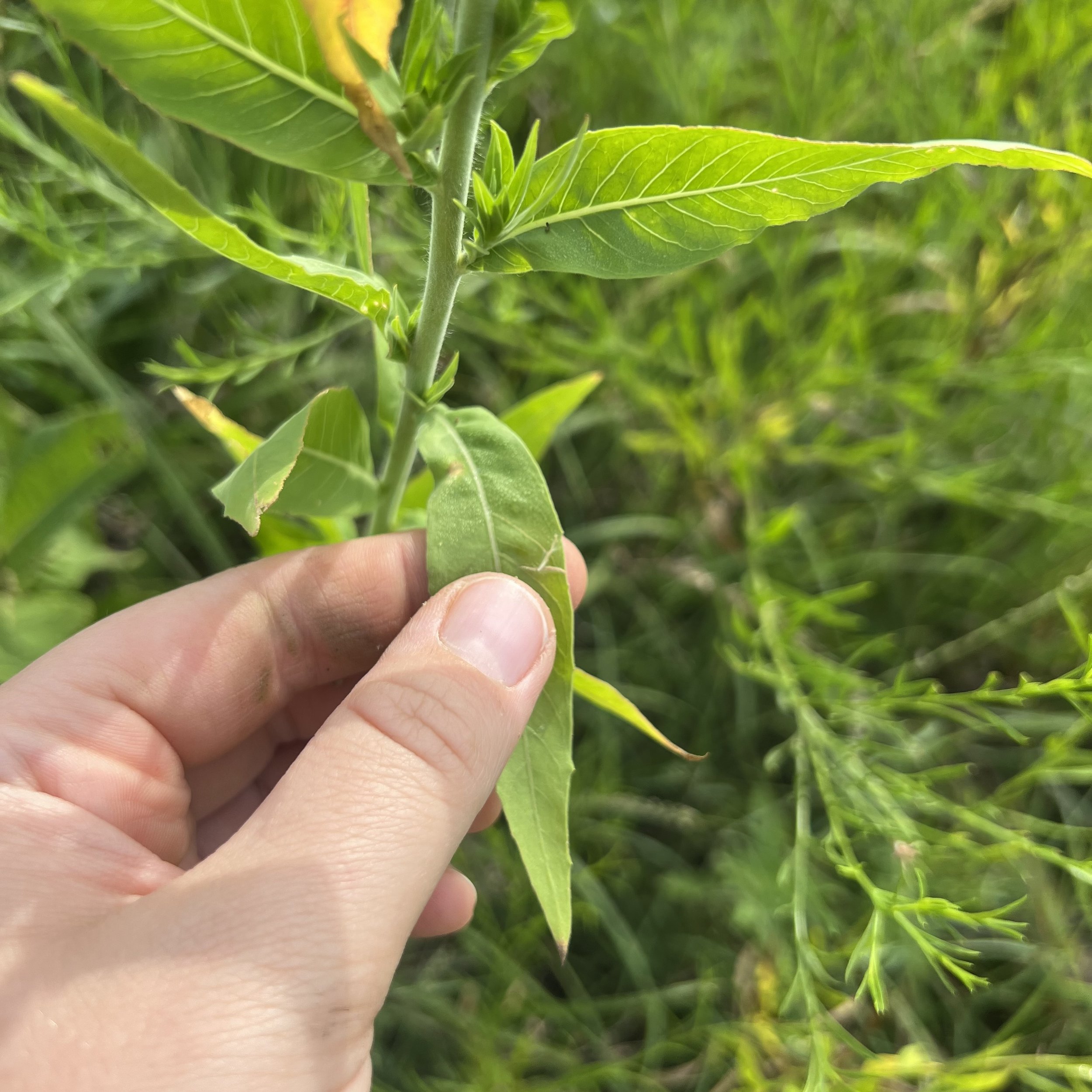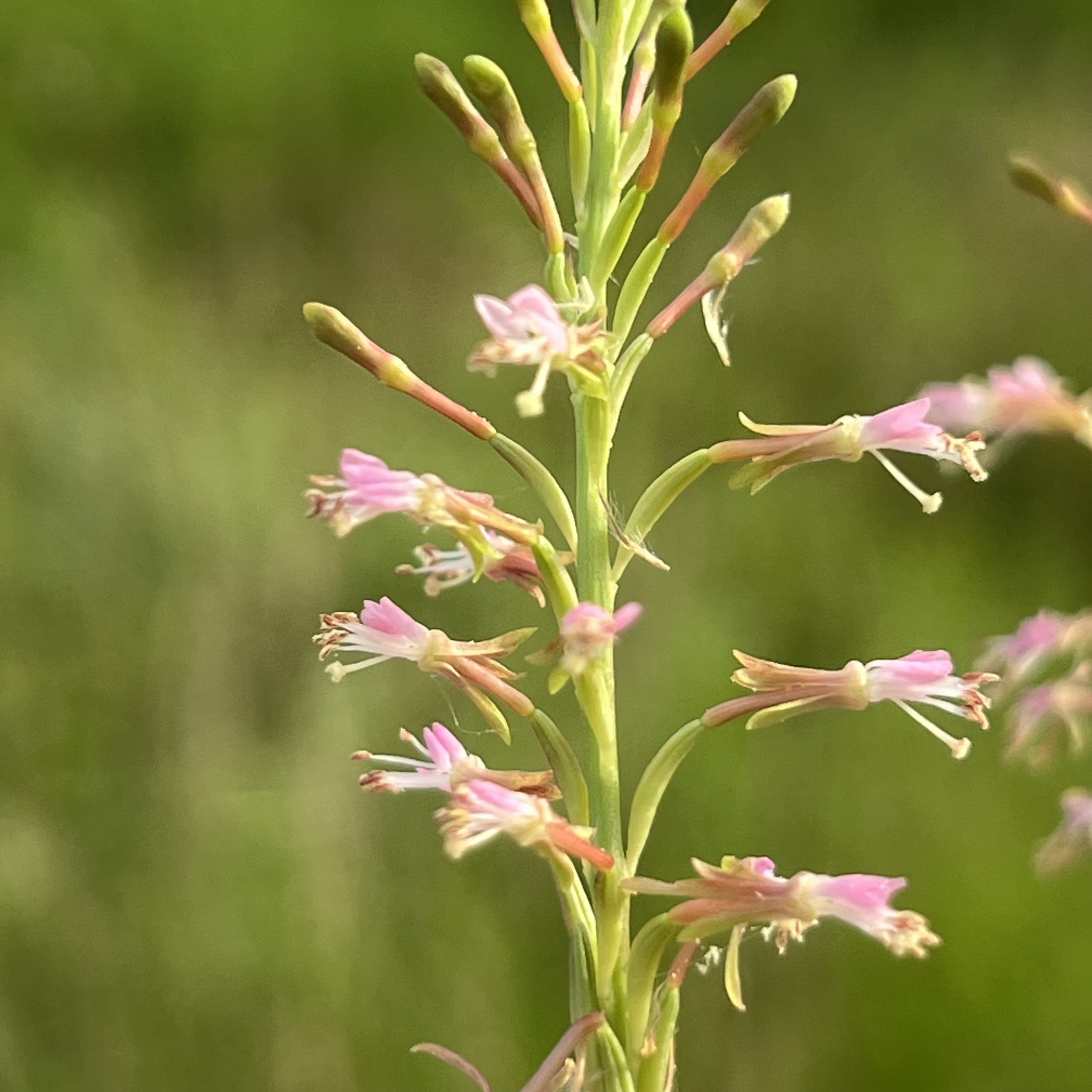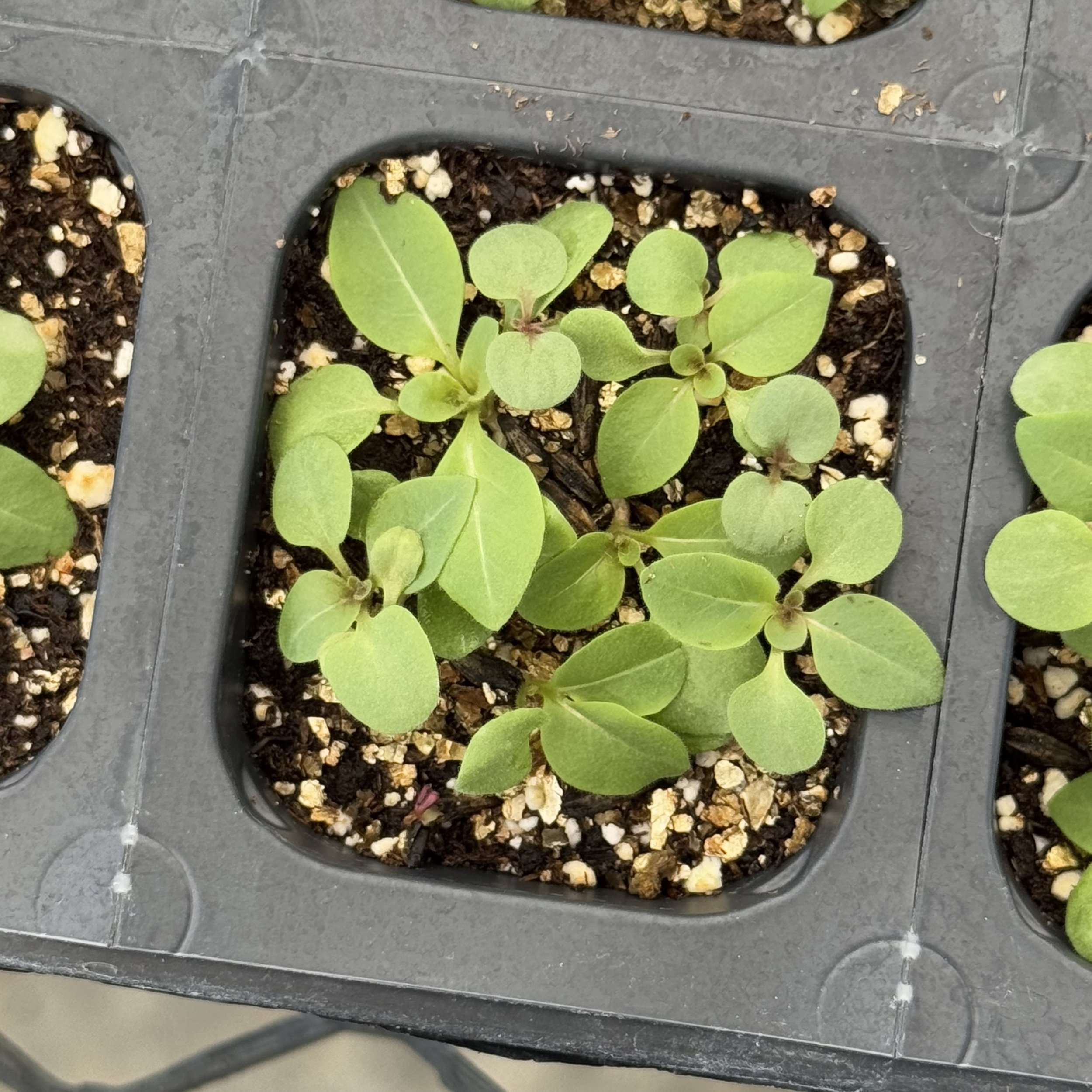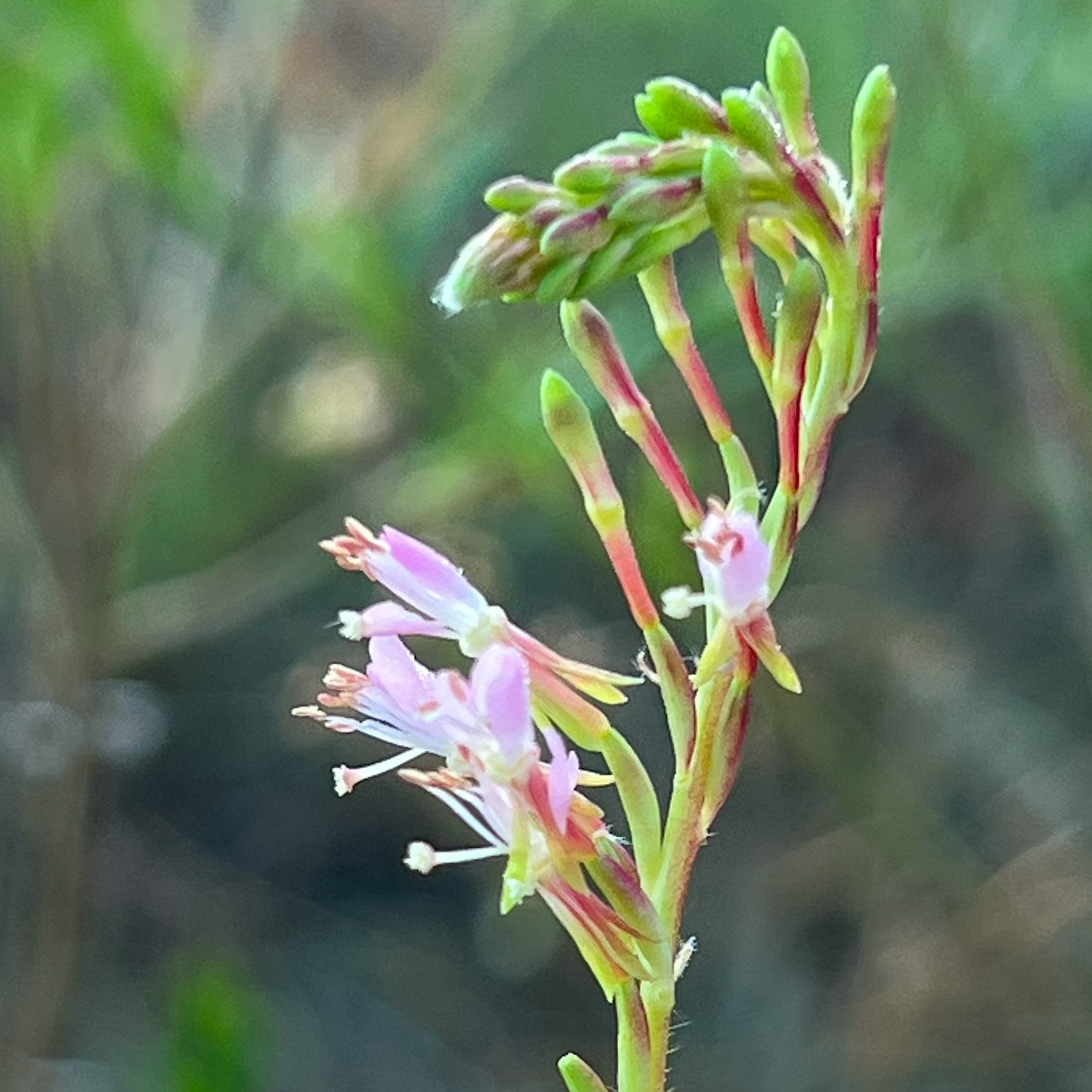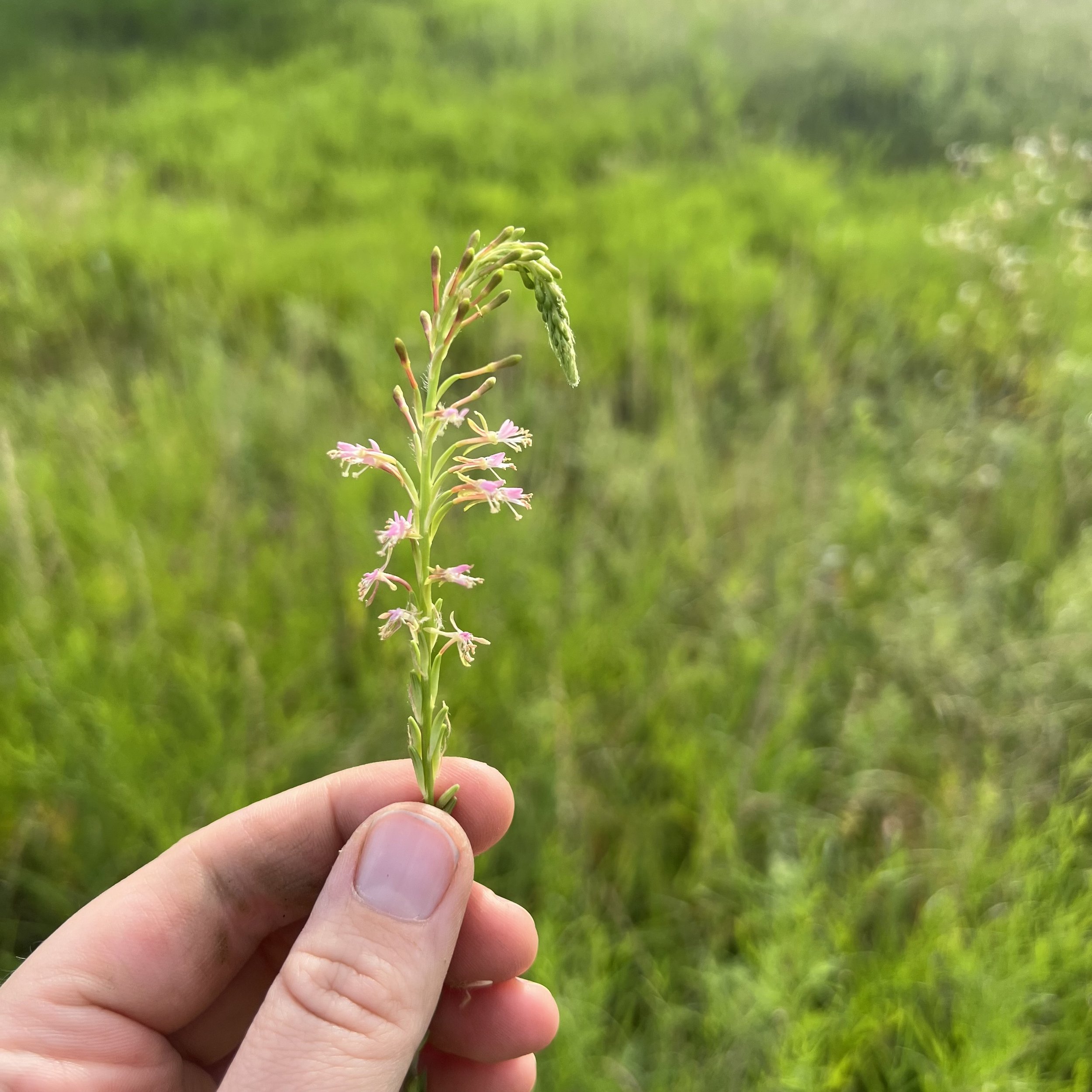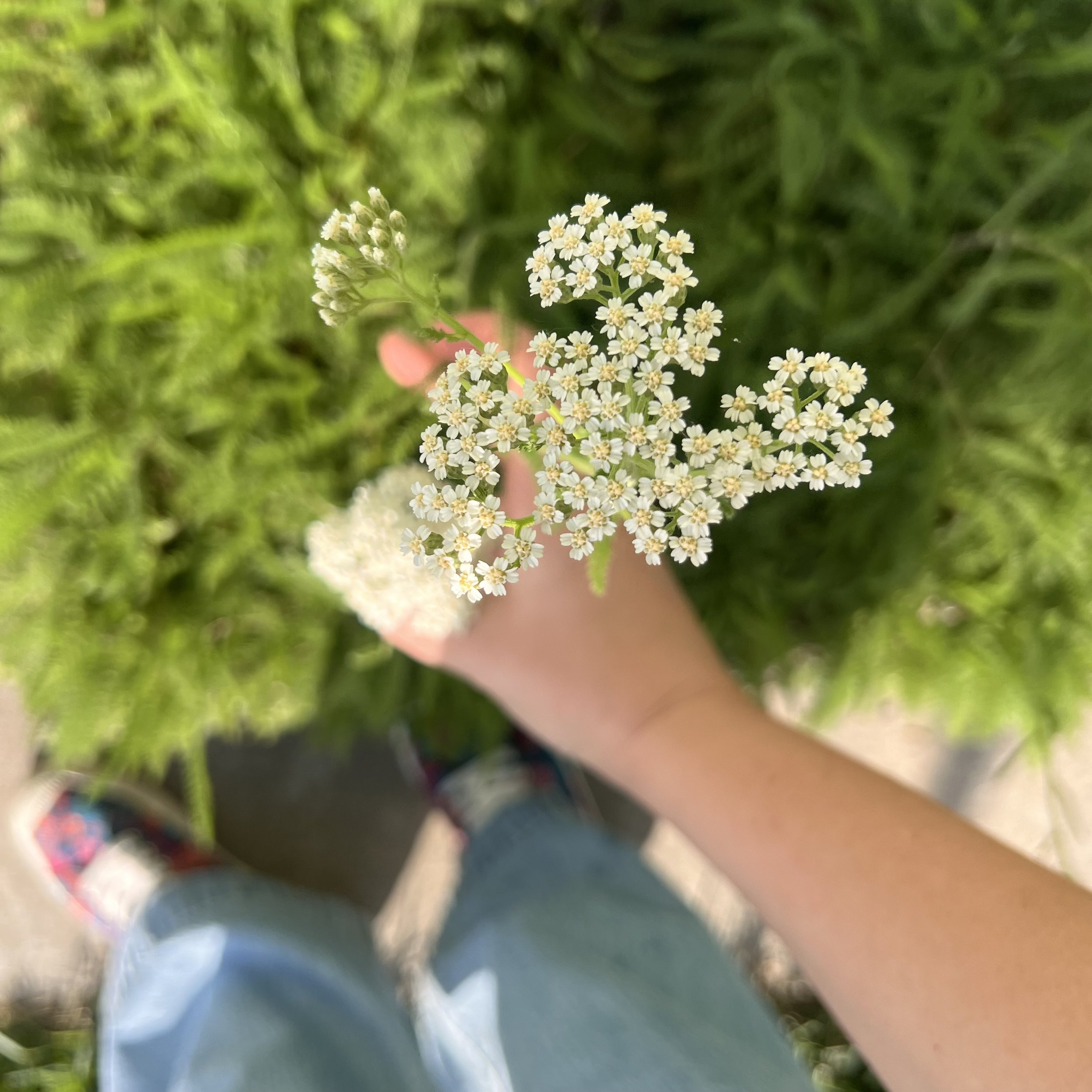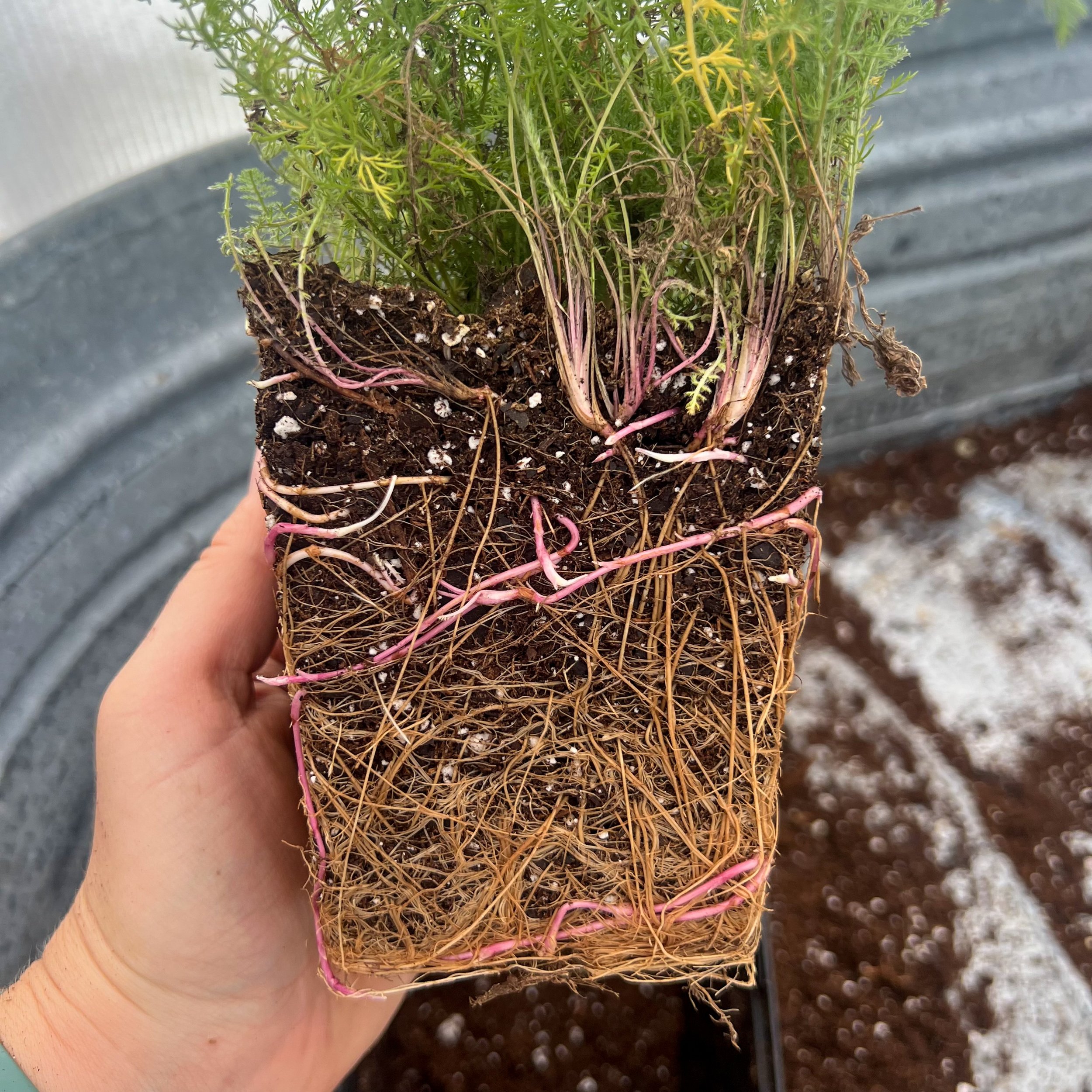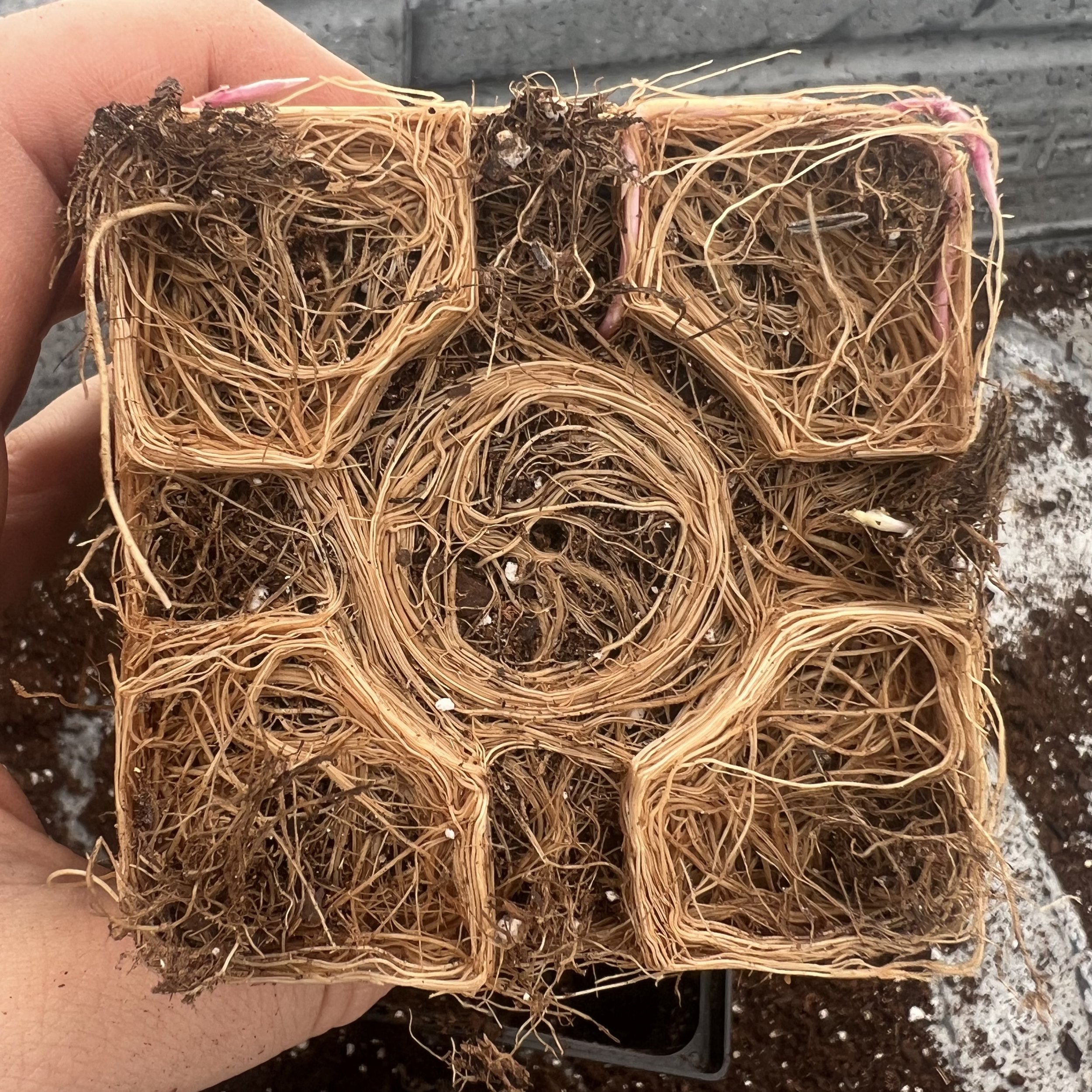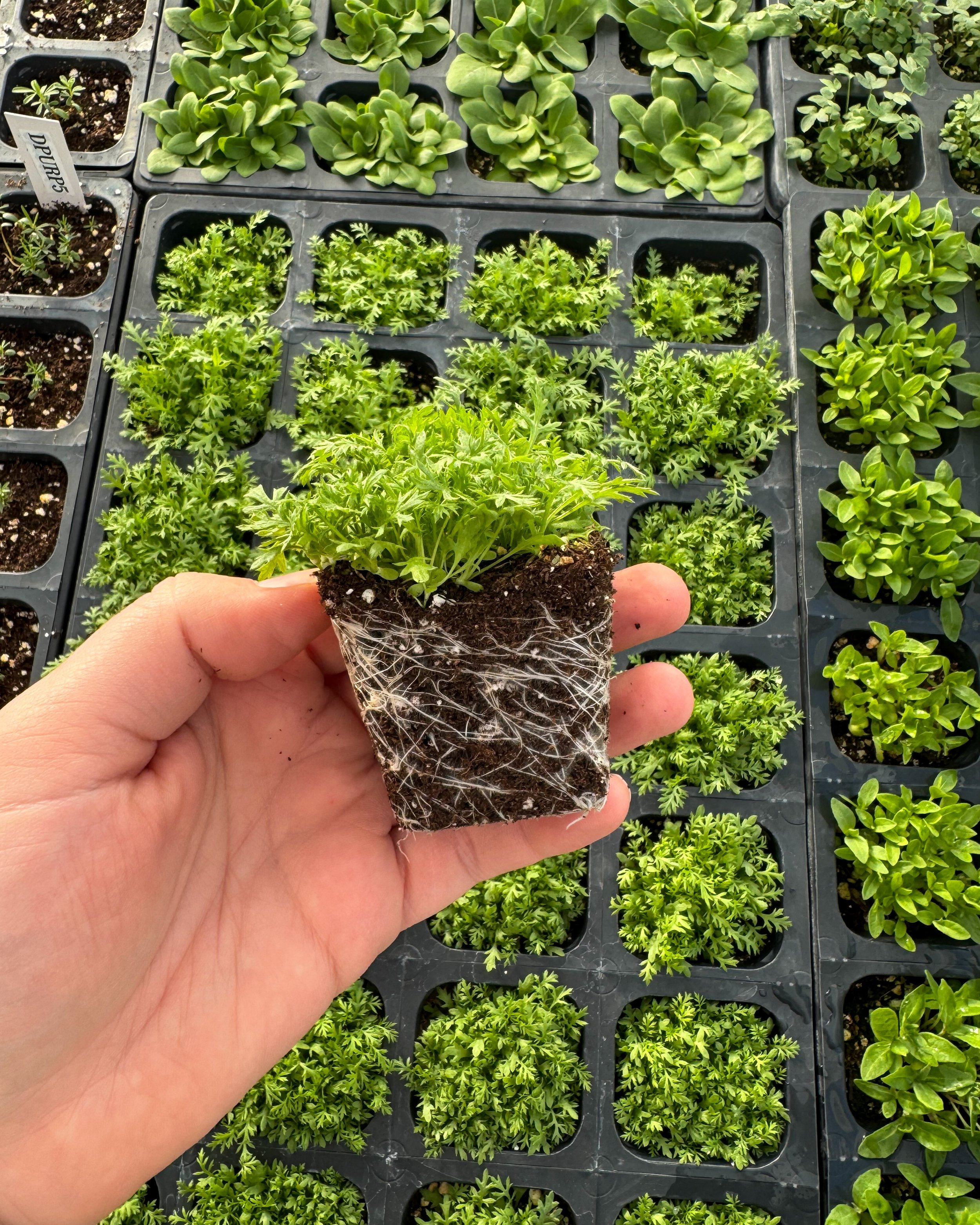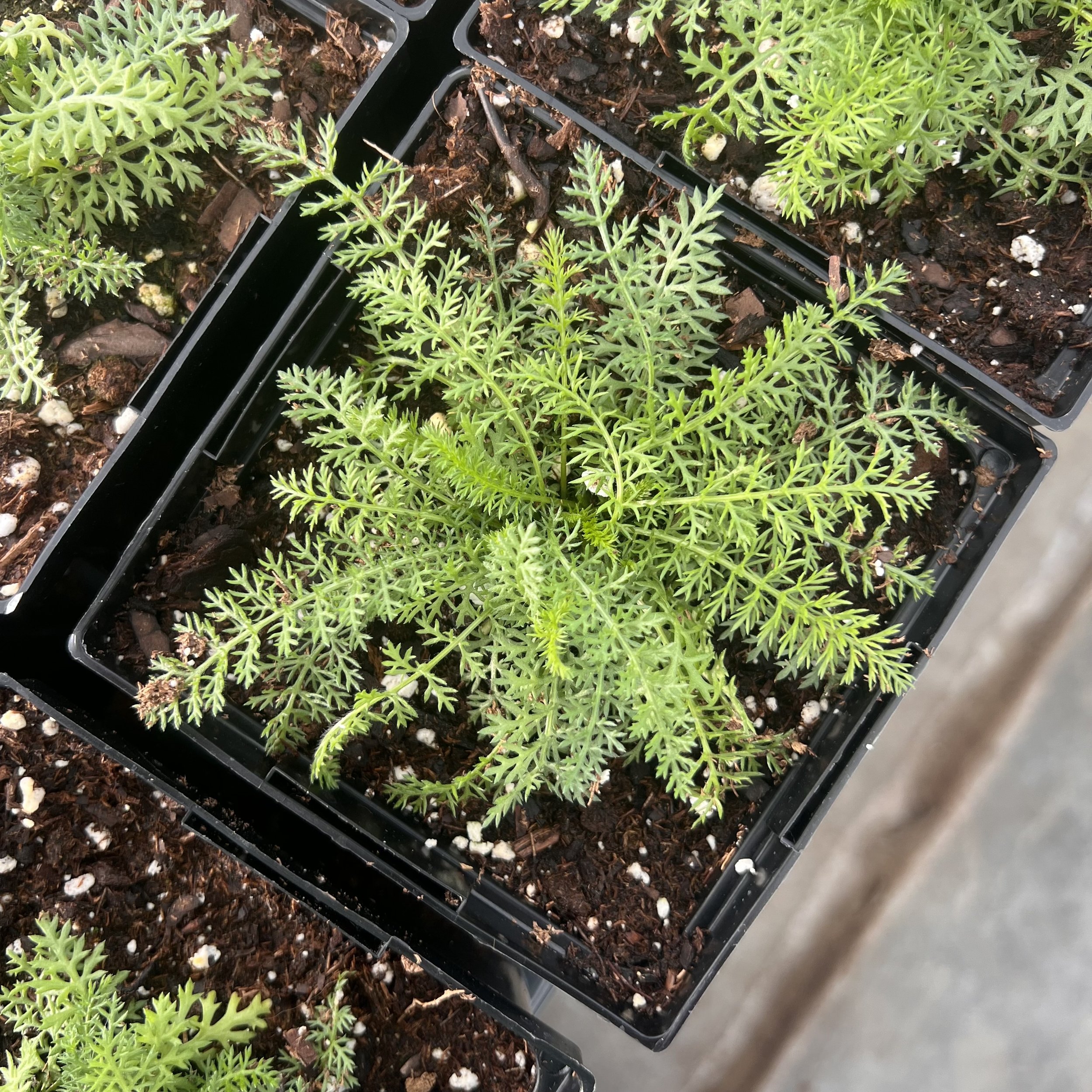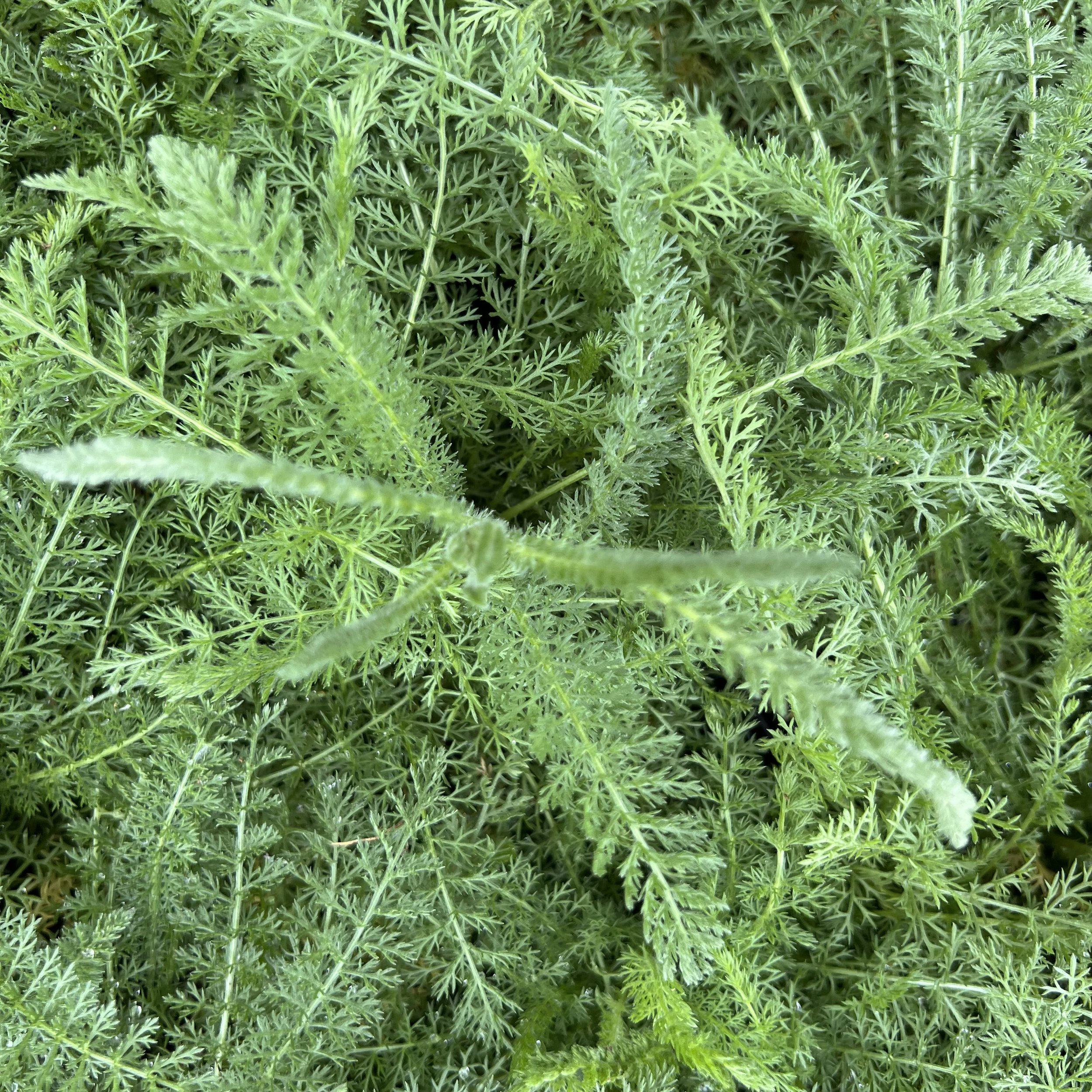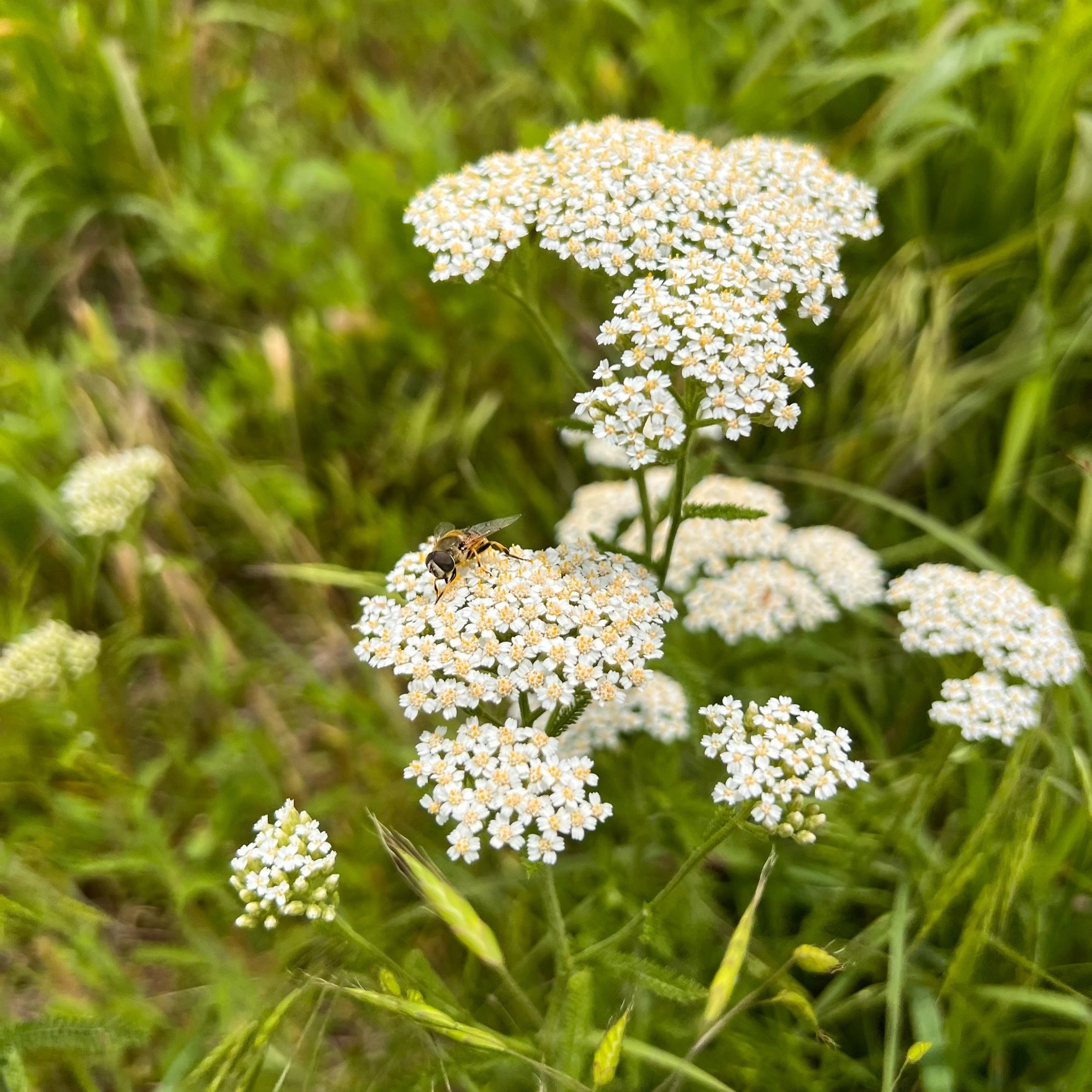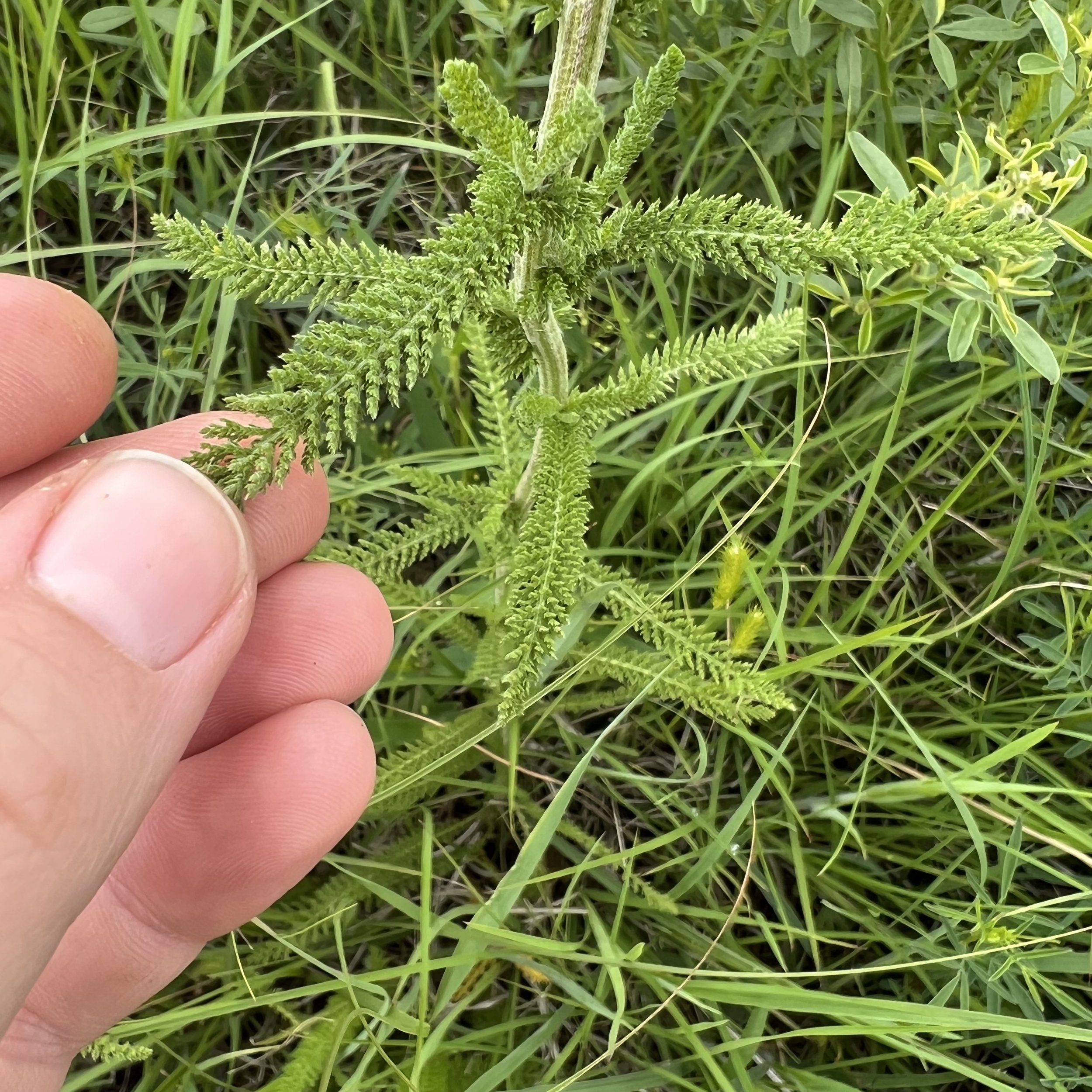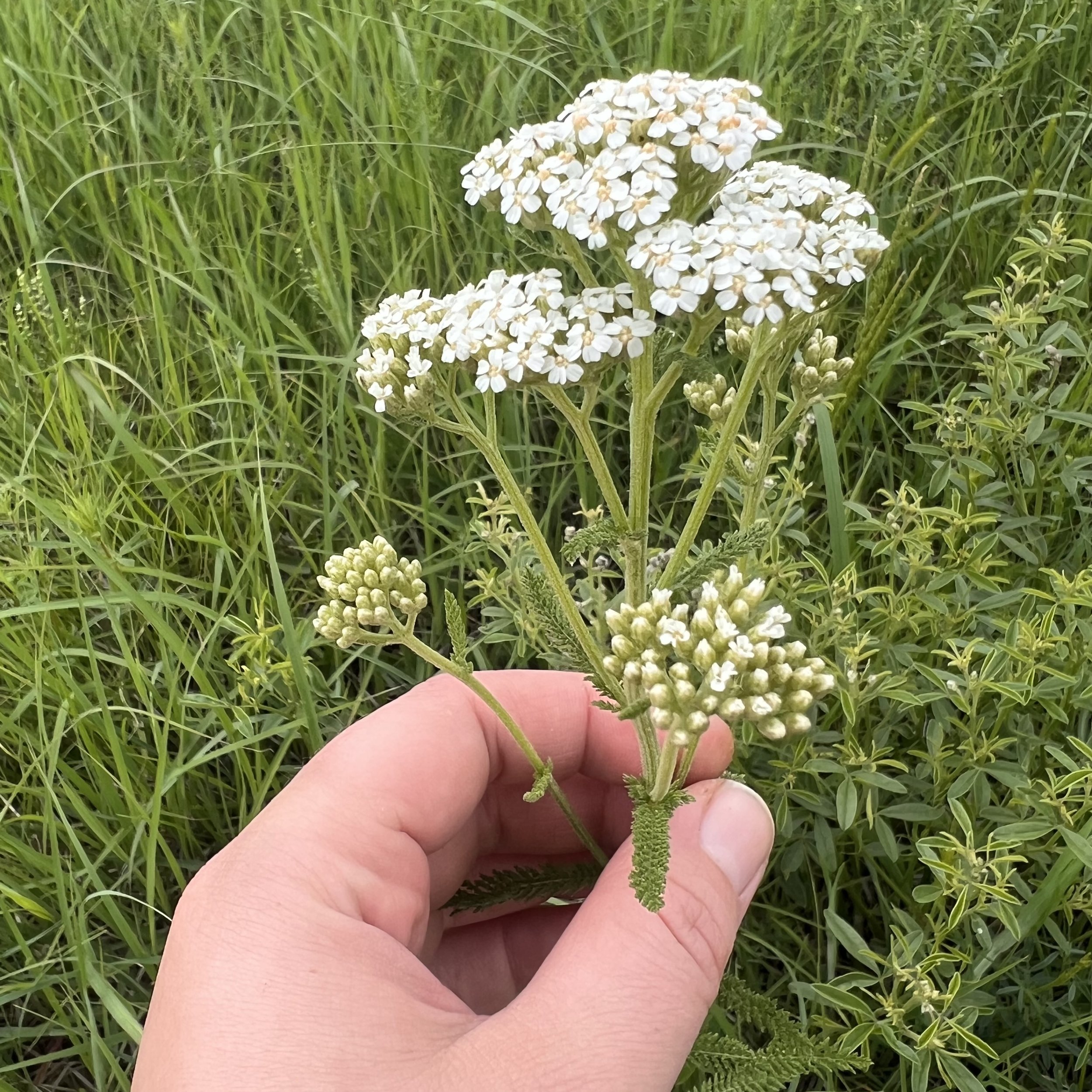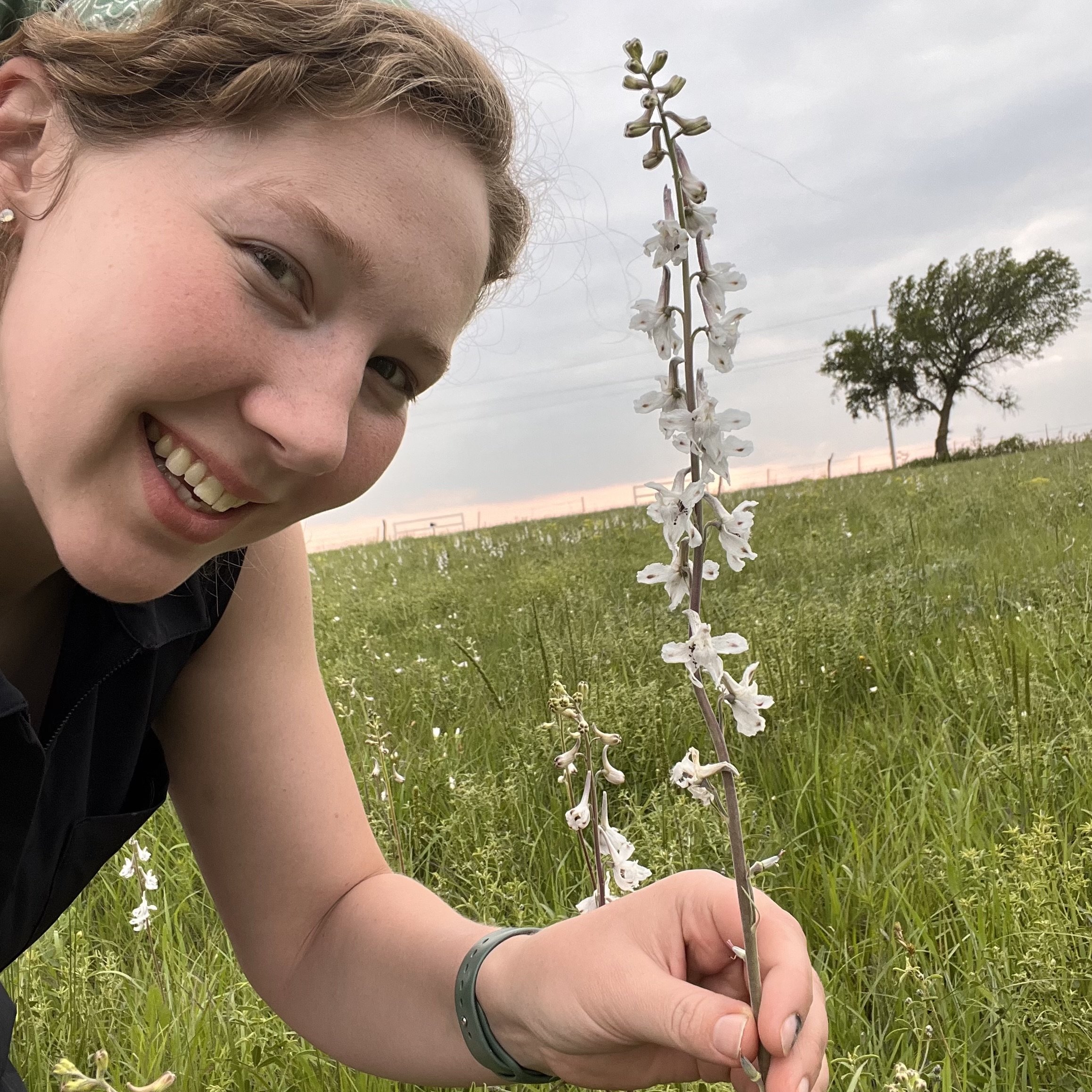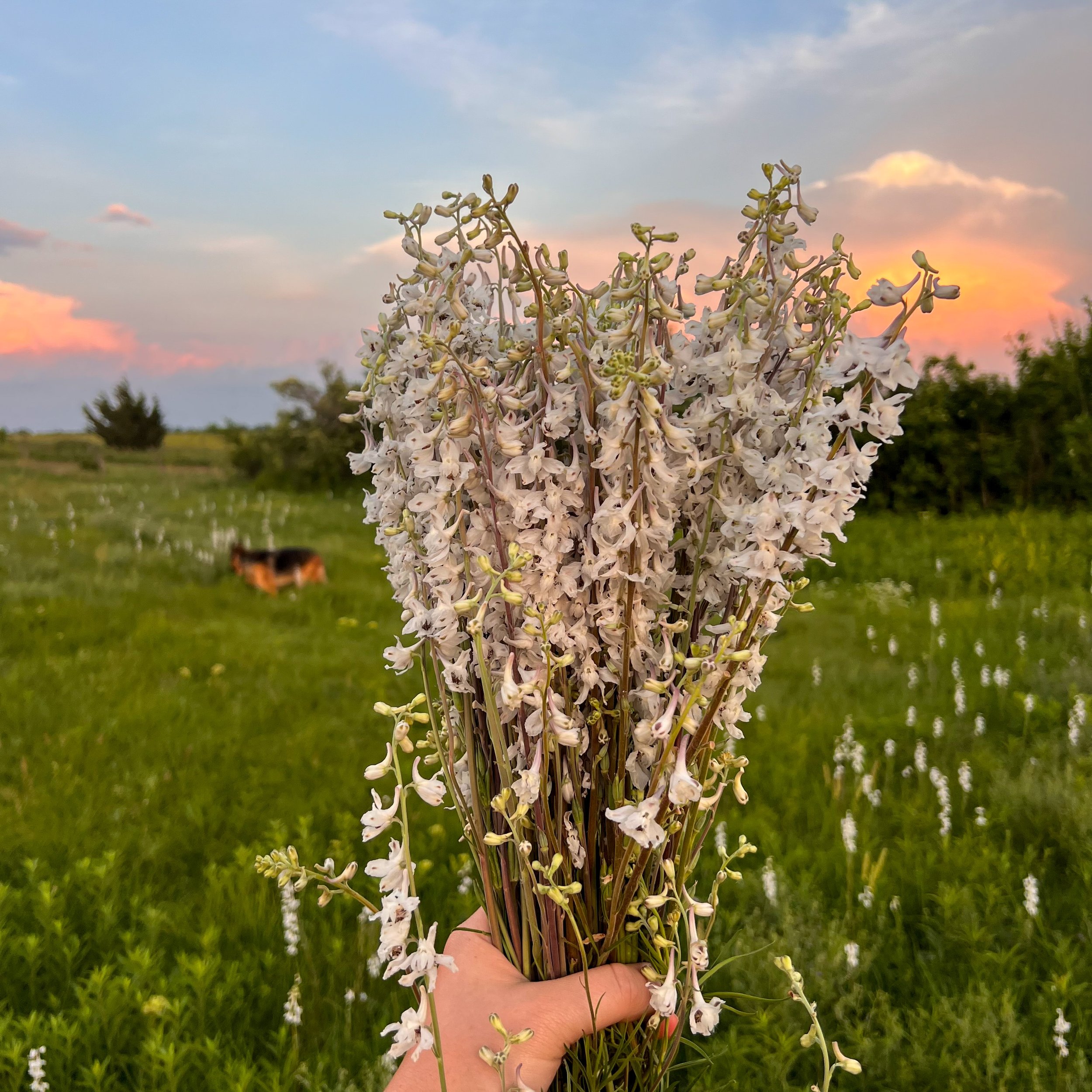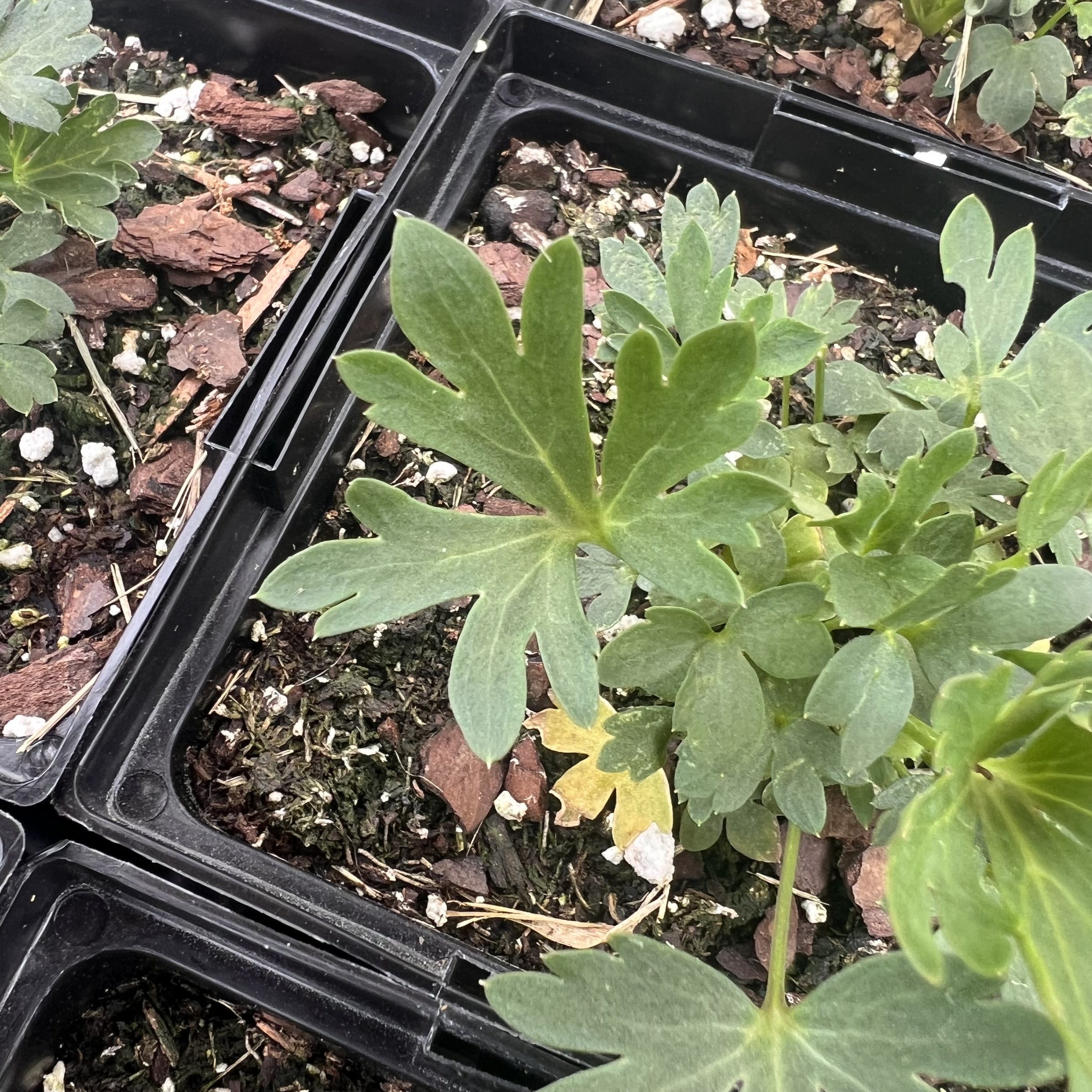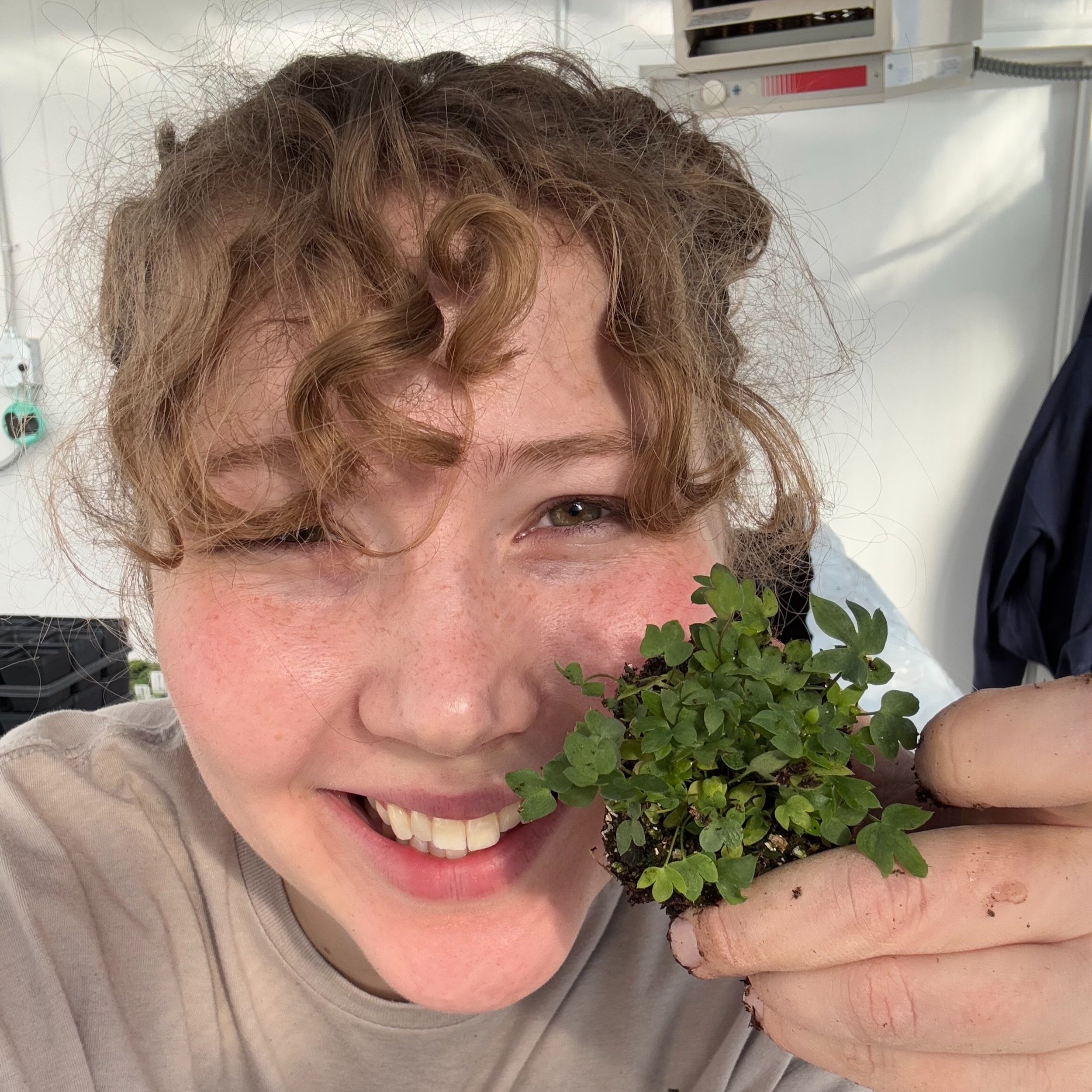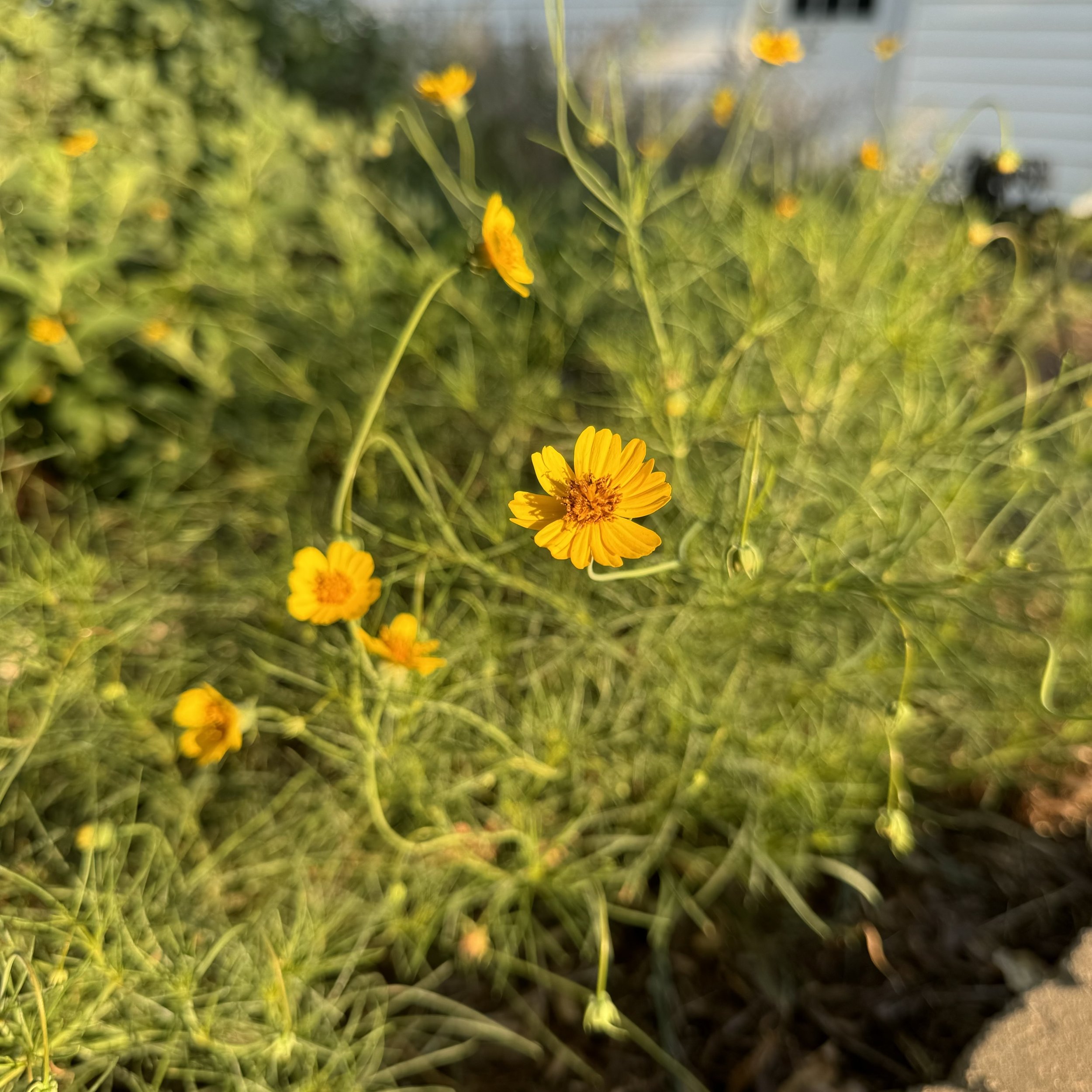 Image 1 of 7
Image 1 of 7

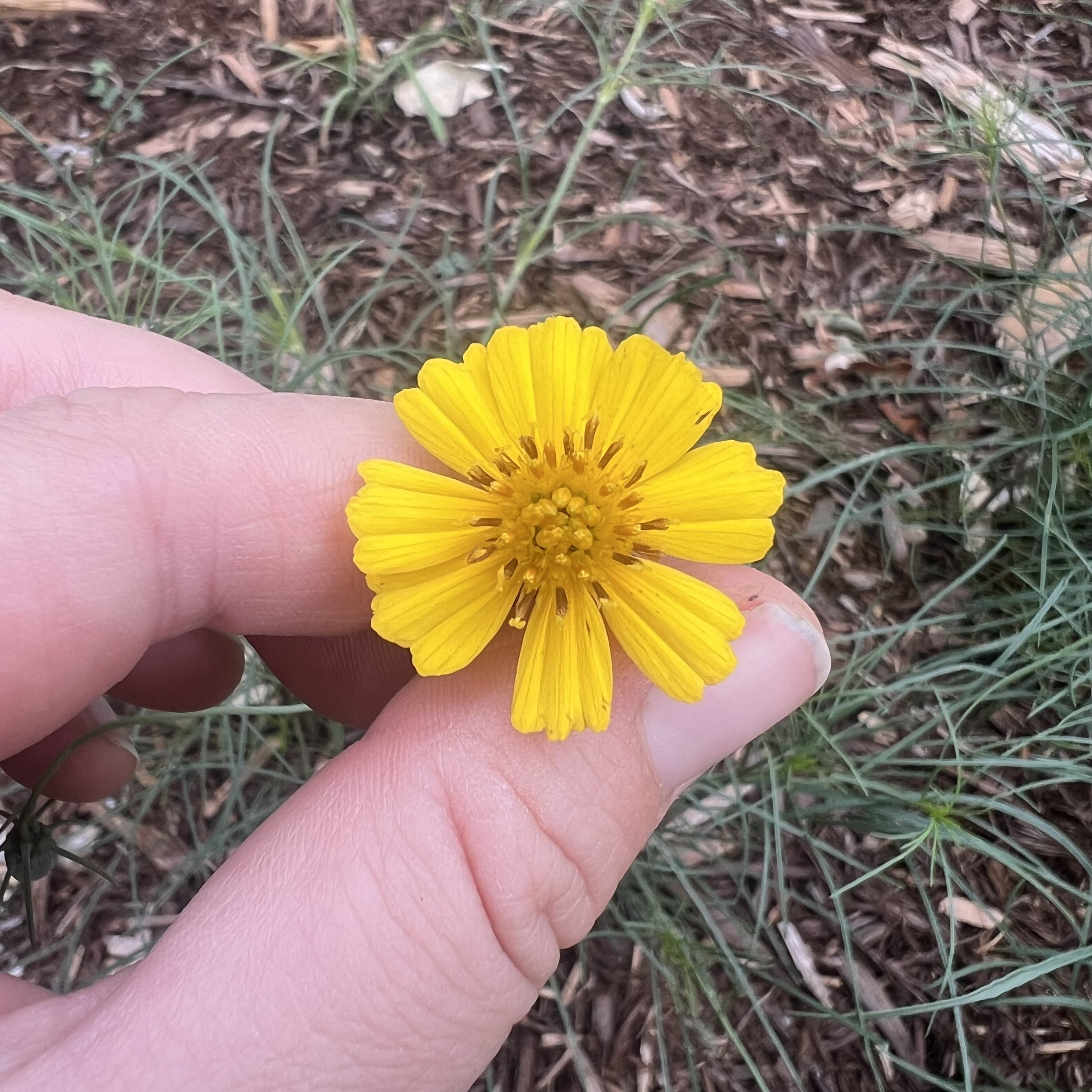 Image 2 of 7
Image 2 of 7

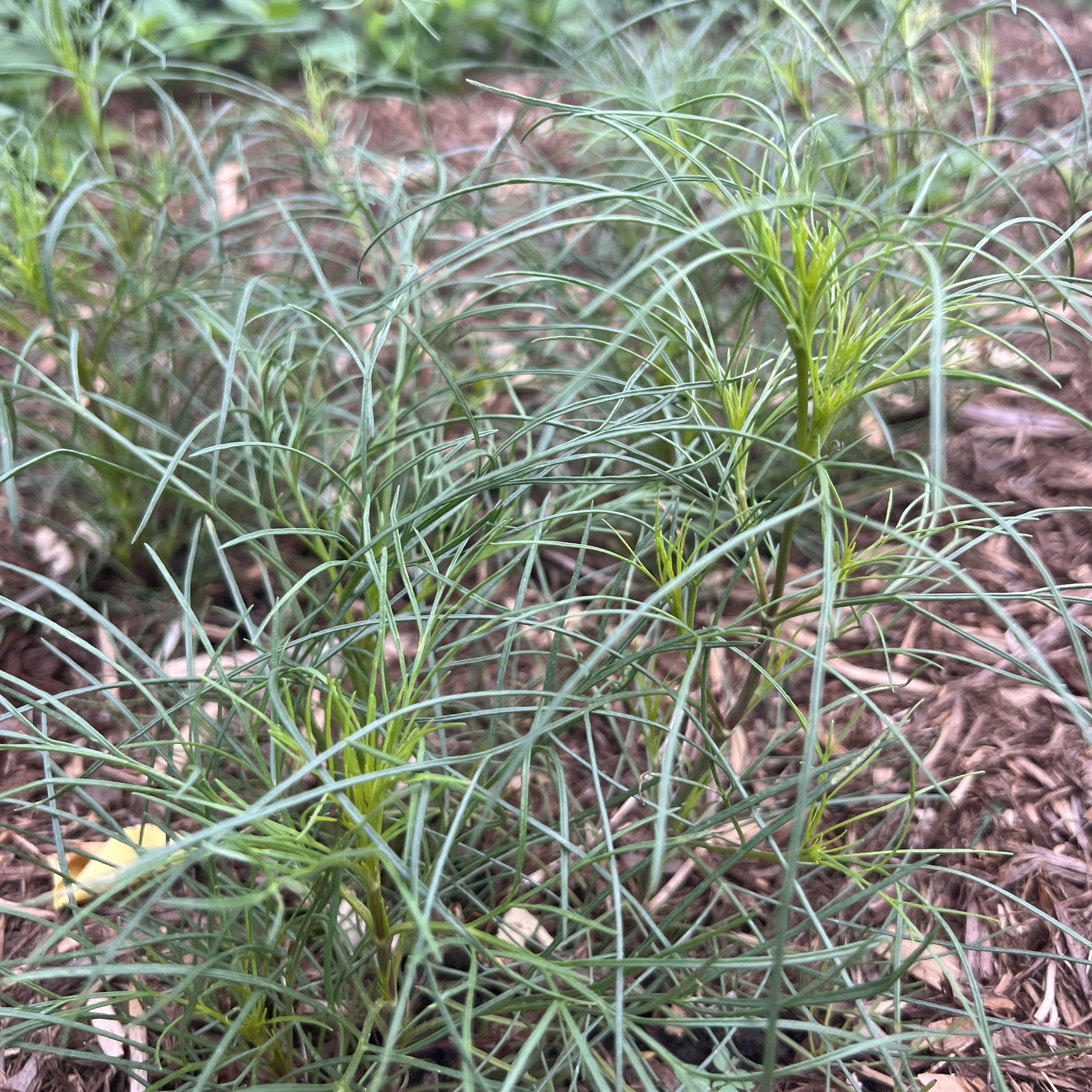 Image 3 of 7
Image 3 of 7

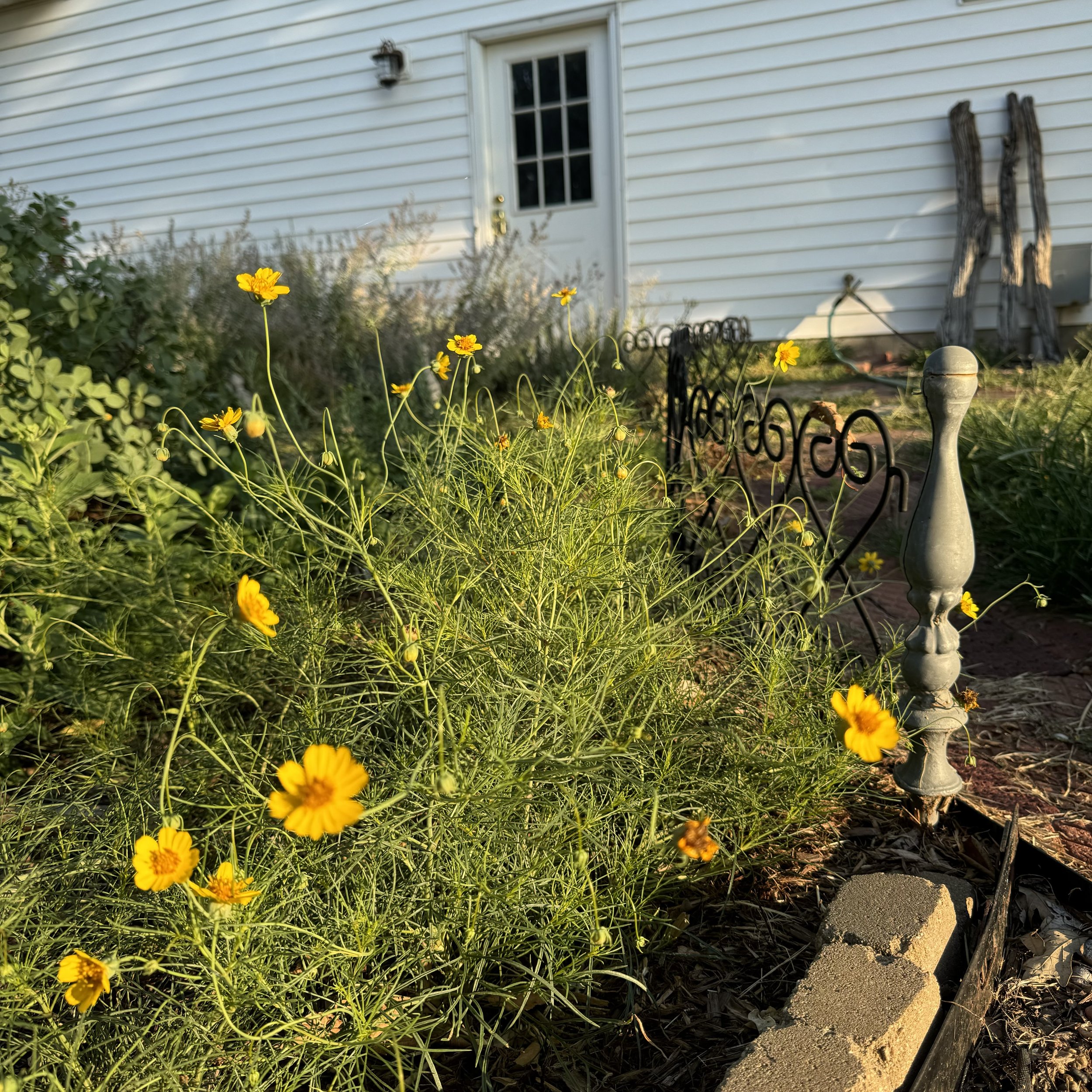 Image 4 of 7
Image 4 of 7

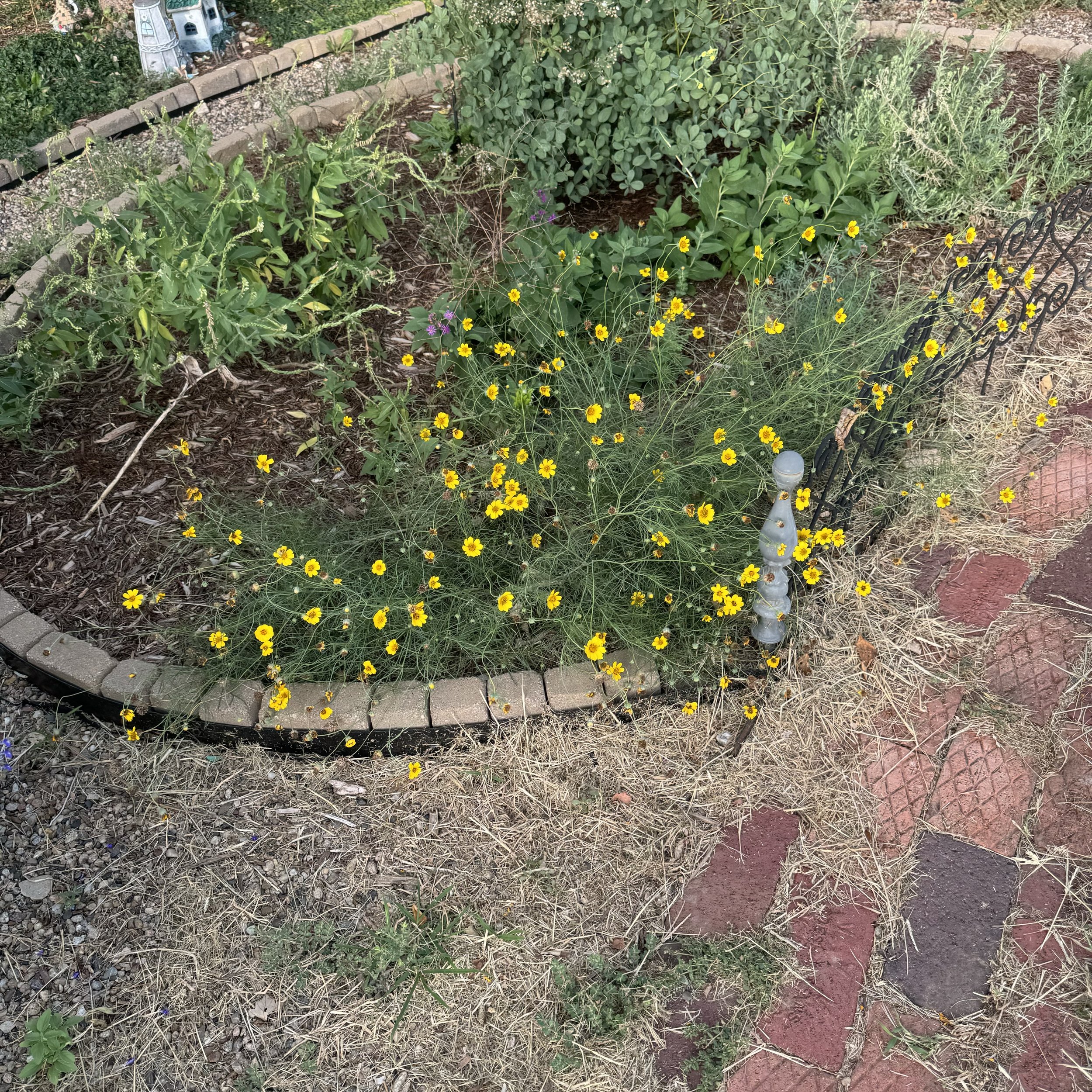 Image 5 of 7
Image 5 of 7

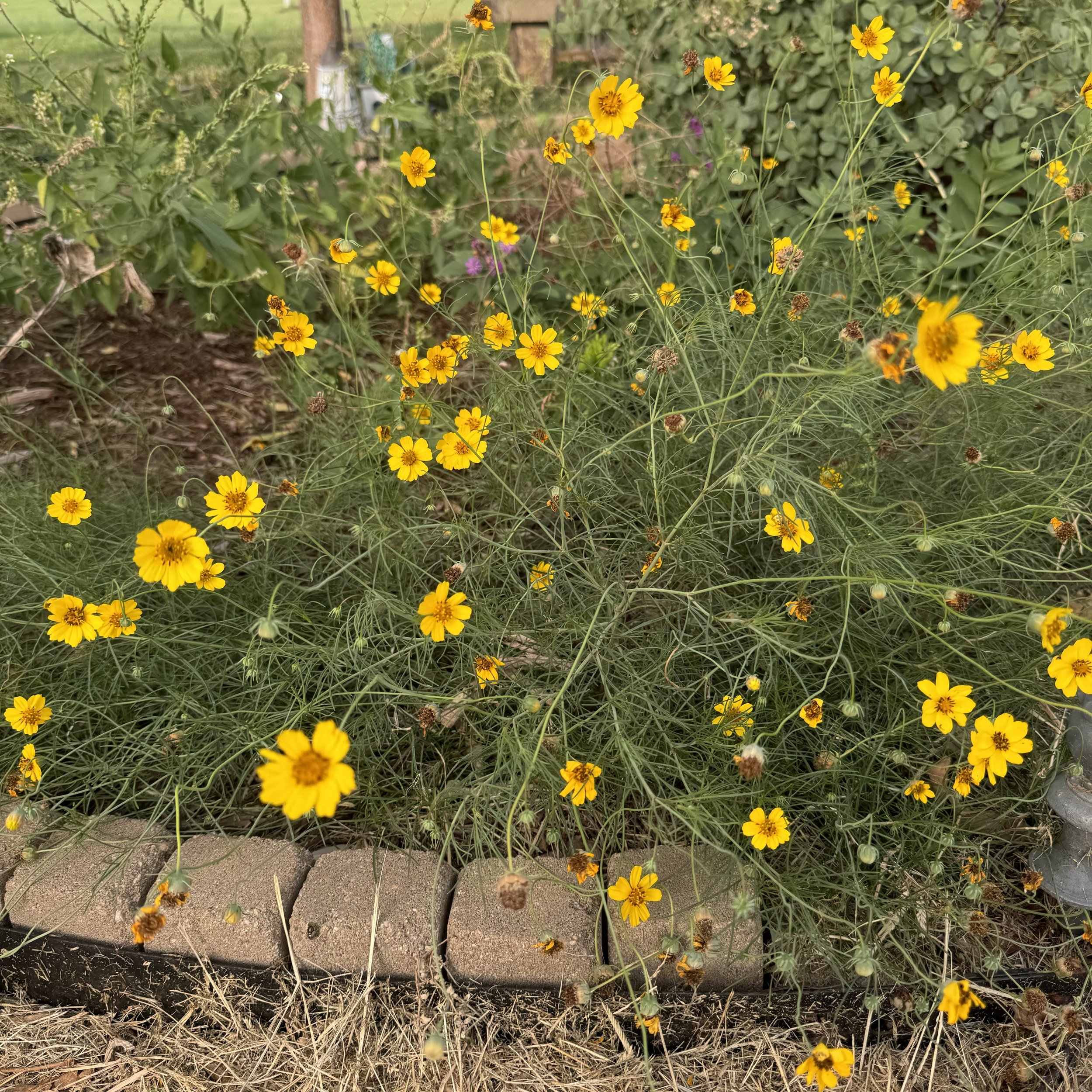 Image 6 of 7
Image 6 of 7

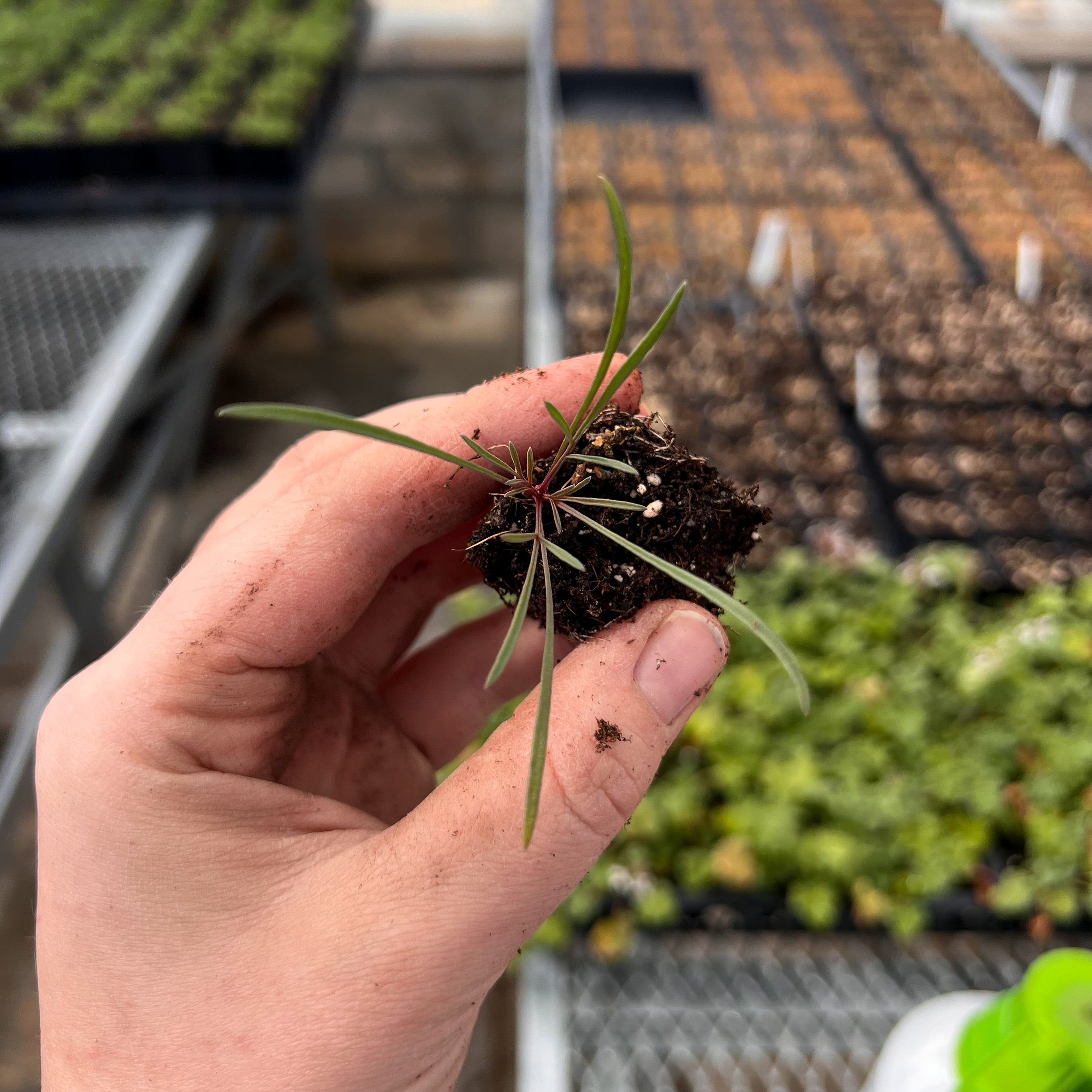 Image 7 of 7
Image 7 of 7








Thread-leaf Greenthread
Pre-orders will be available for pick-up as early as May 1.
I first spotted Thelesperma filifolium on the edge of a pitted pond where loose limestone made it slightly dangerous to traverse. I thought it was a species of coreopsis. Not so! While a part of the sunflower family like coreopsis, greenthread has distinct, needle-like leaves. The foliage does remind me of a wad of thread that my cats pulled off my sewing machine. The name fits!
Its cheery yellow disc flowers bloom May to October. Greenthread is a re-seeding annual that spreads similarly, though perhaps not as aggressively, as annual black-eyed Susan.
Unlike my perennial natives, I grew this plant in a deep 6-pack to help you get more plants established over the summer. More plants equals more seed and a higher likelihood of establishment in a native garden.
Height: 8-26”
Pre-orders will be available for pick-up as early as May 1.
I first spotted Thelesperma filifolium on the edge of a pitted pond where loose limestone made it slightly dangerous to traverse. I thought it was a species of coreopsis. Not so! While a part of the sunflower family like coreopsis, greenthread has distinct, needle-like leaves. The foliage does remind me of a wad of thread that my cats pulled off my sewing machine. The name fits!
Its cheery yellow disc flowers bloom May to October. Greenthread is a re-seeding annual that spreads similarly, though perhaps not as aggressively, as annual black-eyed Susan.
Unlike my perennial natives, I grew this plant in a deep 6-pack to help you get more plants established over the summer. More plants equals more seed and a higher likelihood of establishment in a native garden.
Height: 8-26”
Pre-orders will be available for pick-up as early as May 1.
I first spotted Thelesperma filifolium on the edge of a pitted pond where loose limestone made it slightly dangerous to traverse. I thought it was a species of coreopsis. Not so! While a part of the sunflower family like coreopsis, greenthread has distinct, needle-like leaves. The foliage does remind me of a wad of thread that my cats pulled off my sewing machine. The name fits!
Its cheery yellow disc flowers bloom May to October. Greenthread is a re-seeding annual that spreads similarly, though perhaps not as aggressively, as annual black-eyed Susan.
Unlike my perennial natives, I grew this plant in a deep 6-pack to help you get more plants established over the summer. More plants equals more seed and a higher likelihood of establishment in a native garden.
Height: 8-26”
A Note from the Grower
Since I am gathering seeds directly from the Southern Flint Hills region of our prairie, my plants’ genetics are solid and can withstand the soil and climate of our native area.
Regionally native plants also have the added benefit of being ideal pollinator plants. Many of our local birds and insects rely on these plants in a way that nursery-produced cultivars cannot be relied.
For best establishment, aim to plant after soil temperatures have warmed (May-July) or before our first average frost (September-October).
A Note on Native Gardening
Natural landscaping is not manicured, but it can be beautiful! It most certainly is beneficial to our planet. The varieties of plants that I grow in my native program are wild, collected from my family’s 6th generation rangeland. That means that no breeder but nature has touched them.
I avoid producing naturalized species of plants, sticking to tried-and-true native plants that were here before we were. I also do not produce invasive species. To be classified as invasive, plants must be non-native and must be inhibiting the natural populations that already exist here in the midwest.
Native plants can still feel “weedy” to gardeners. While native prairies rely on natural weather patterns for maintenance, our native gardens rely on us for maintenance. Establishing multiple natives in a controlled space, and ensuring that one species does not overtake the others is the main task of the native gardener.



